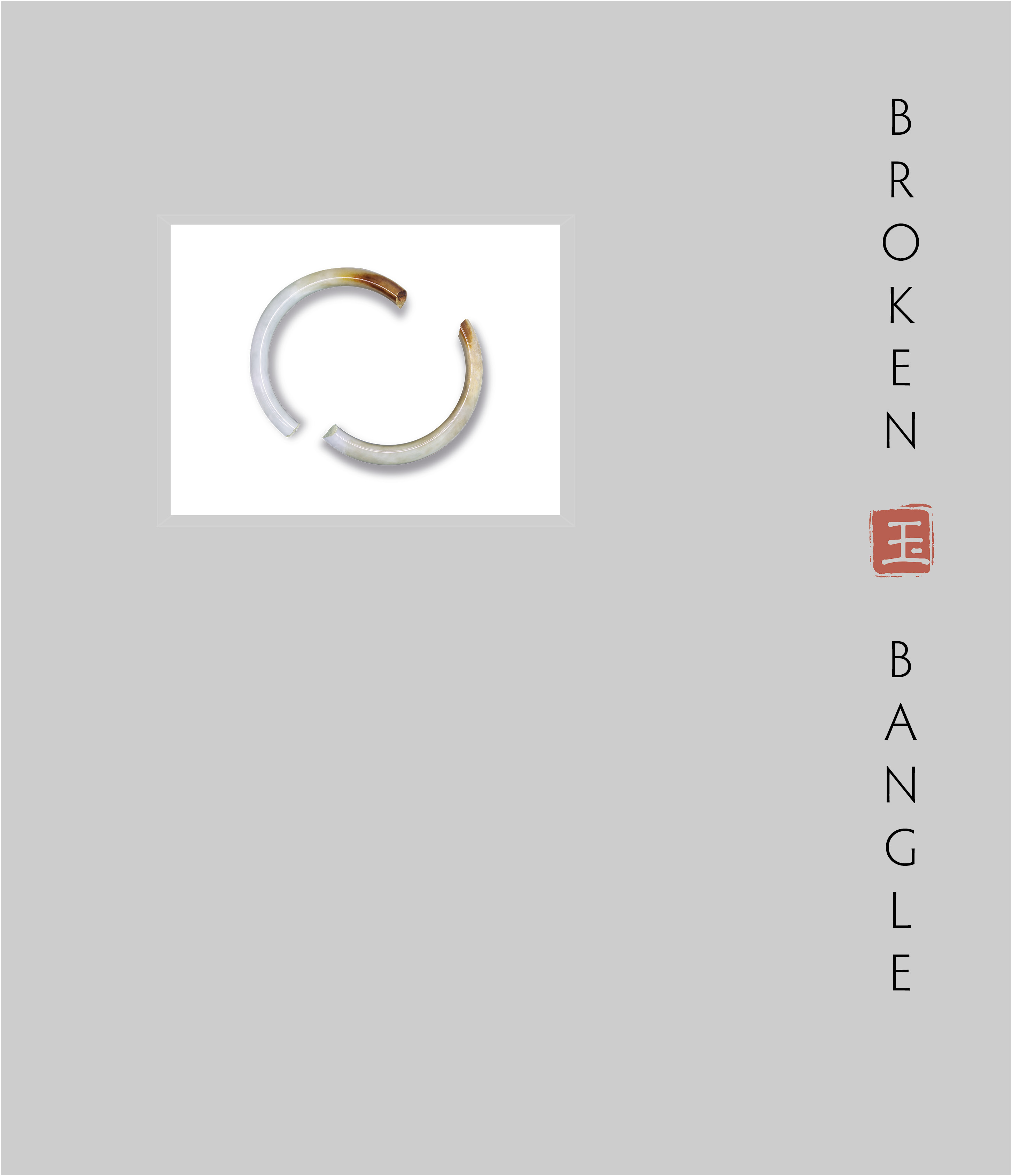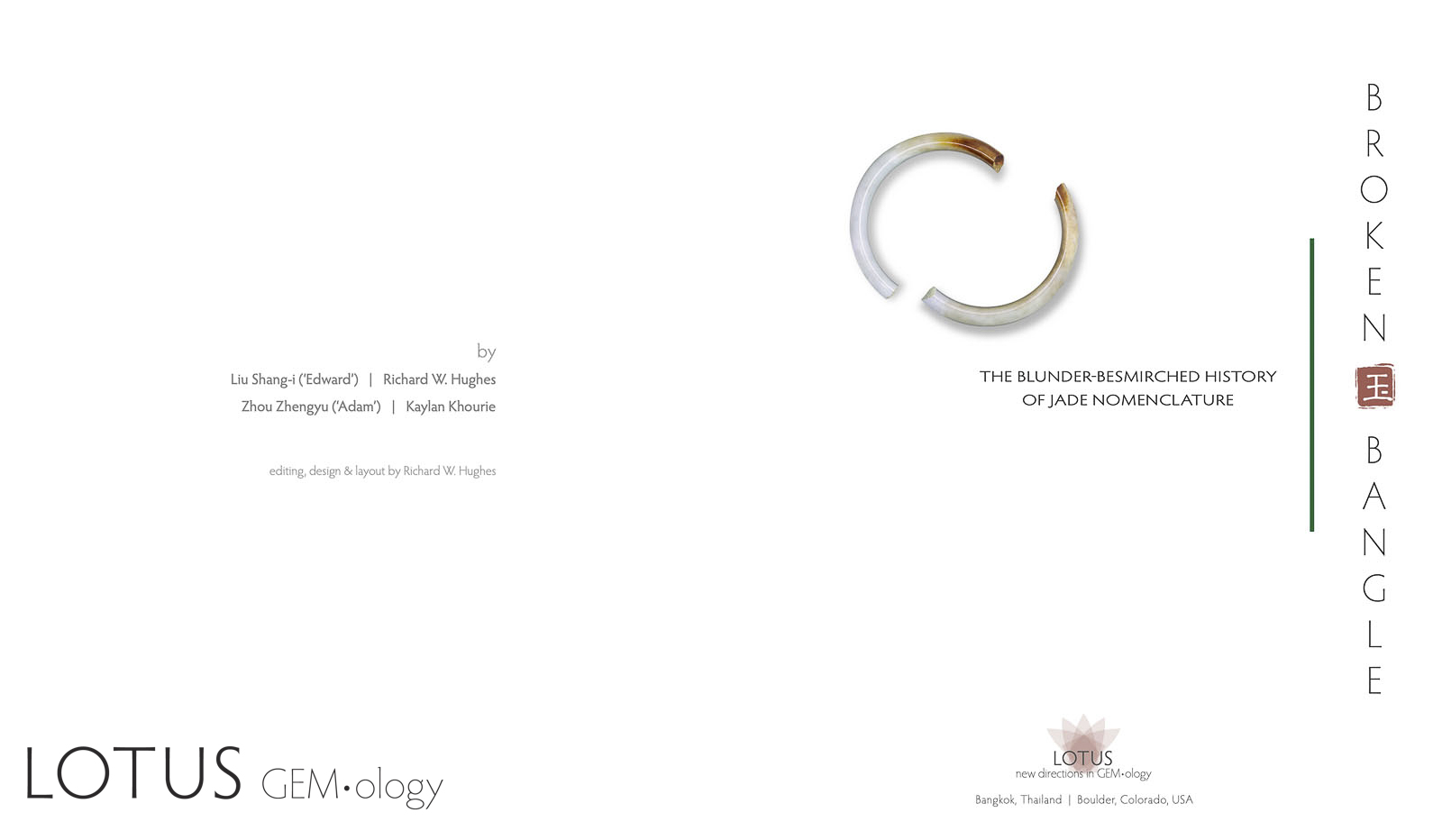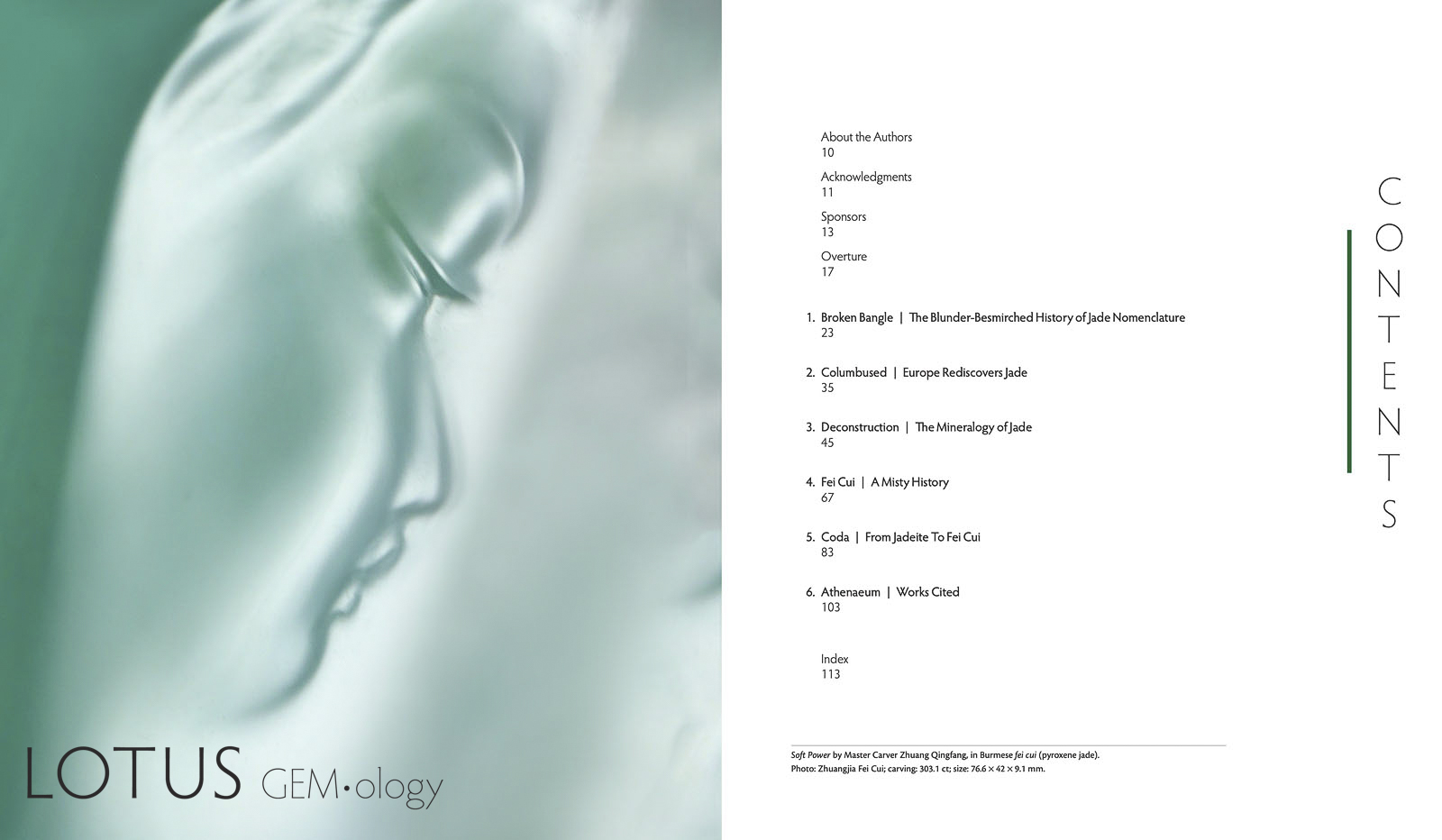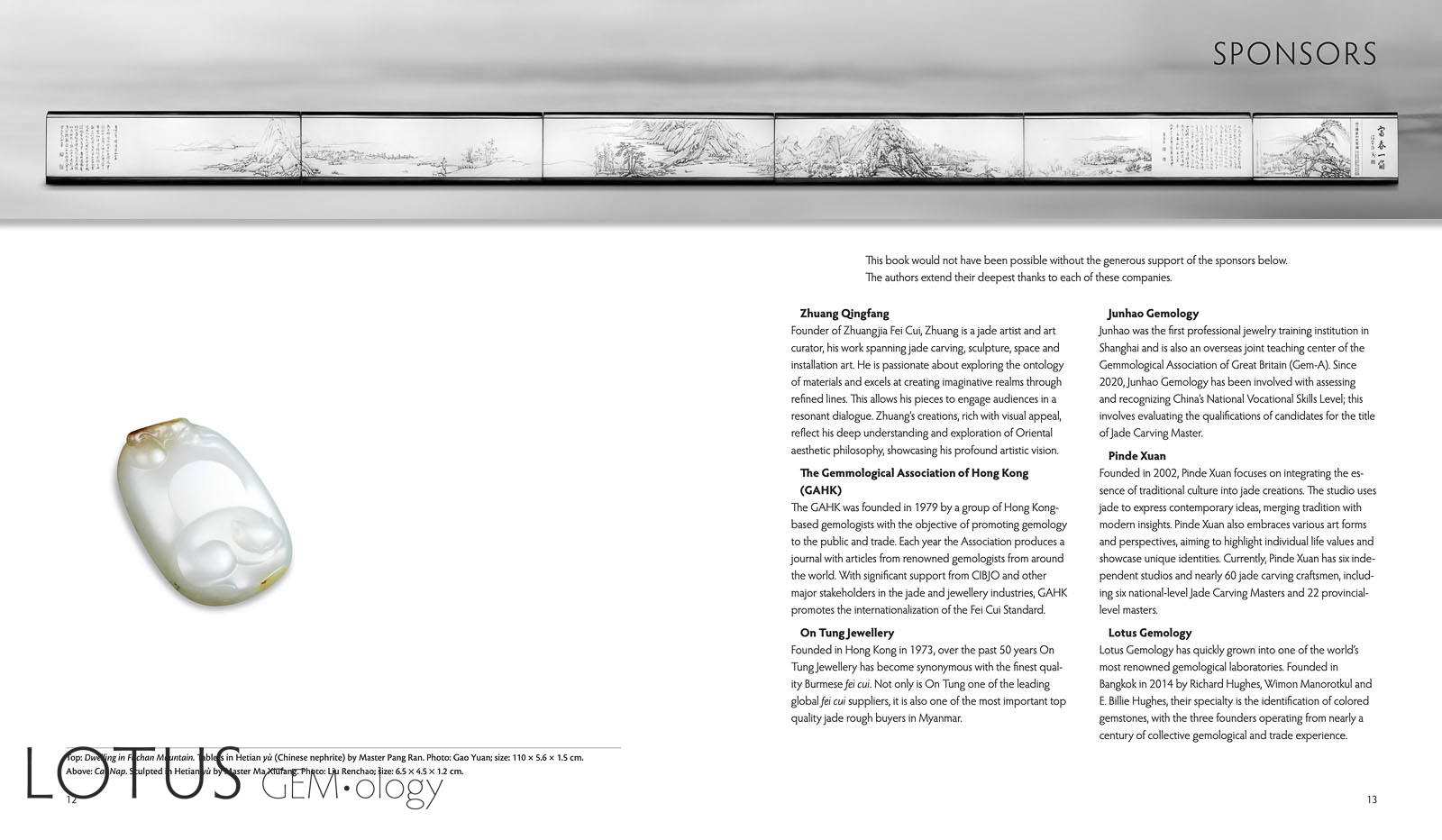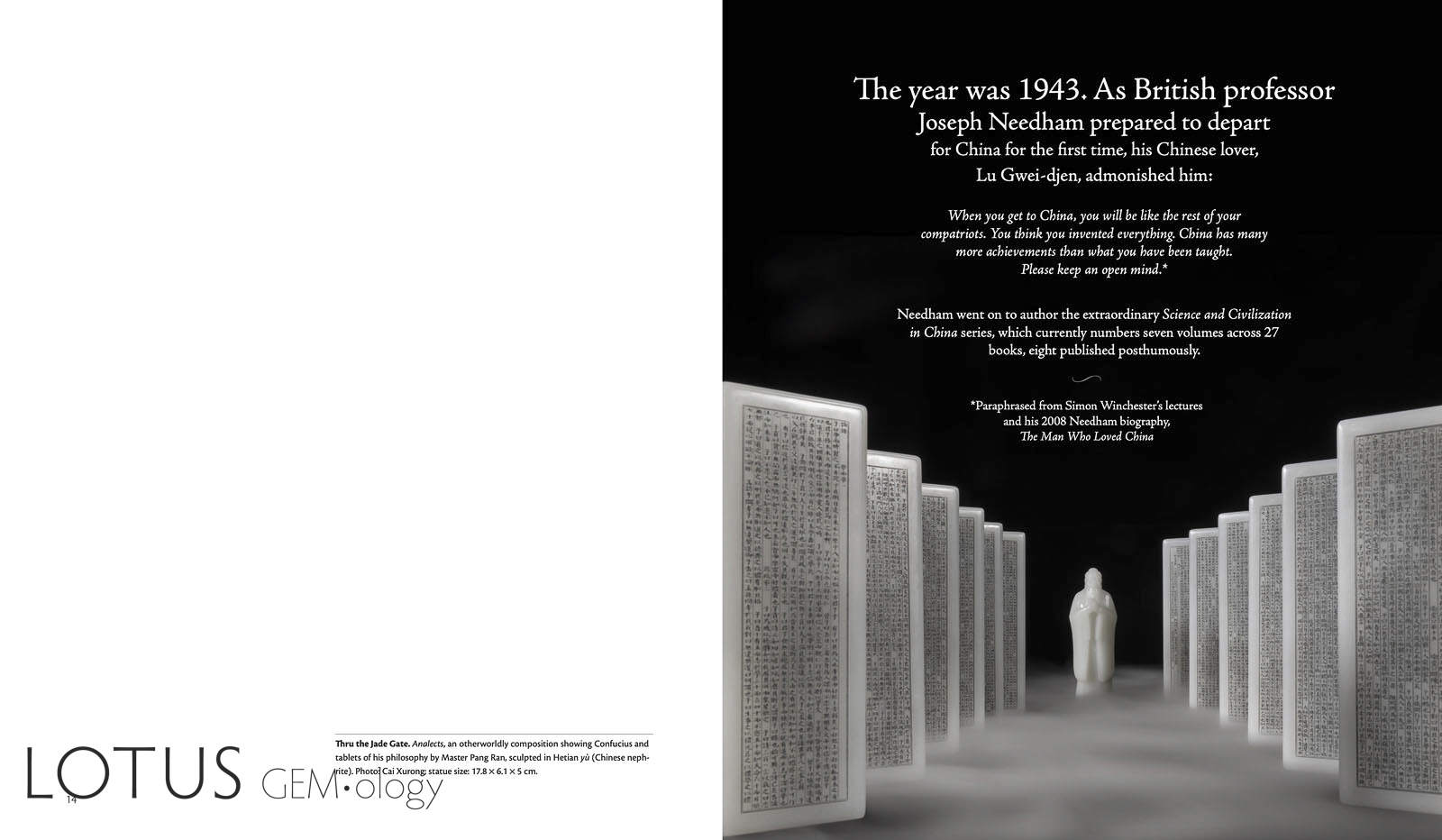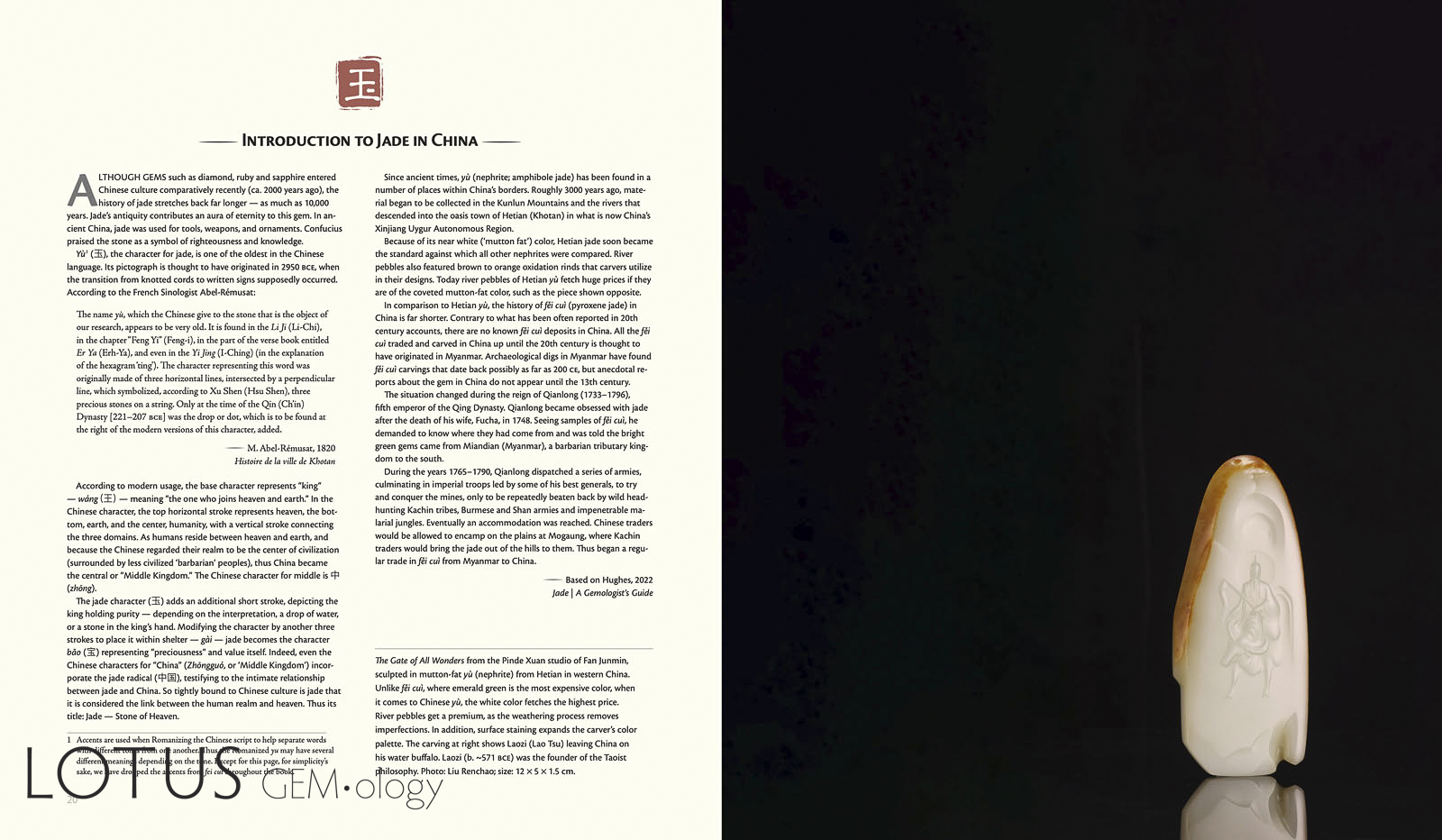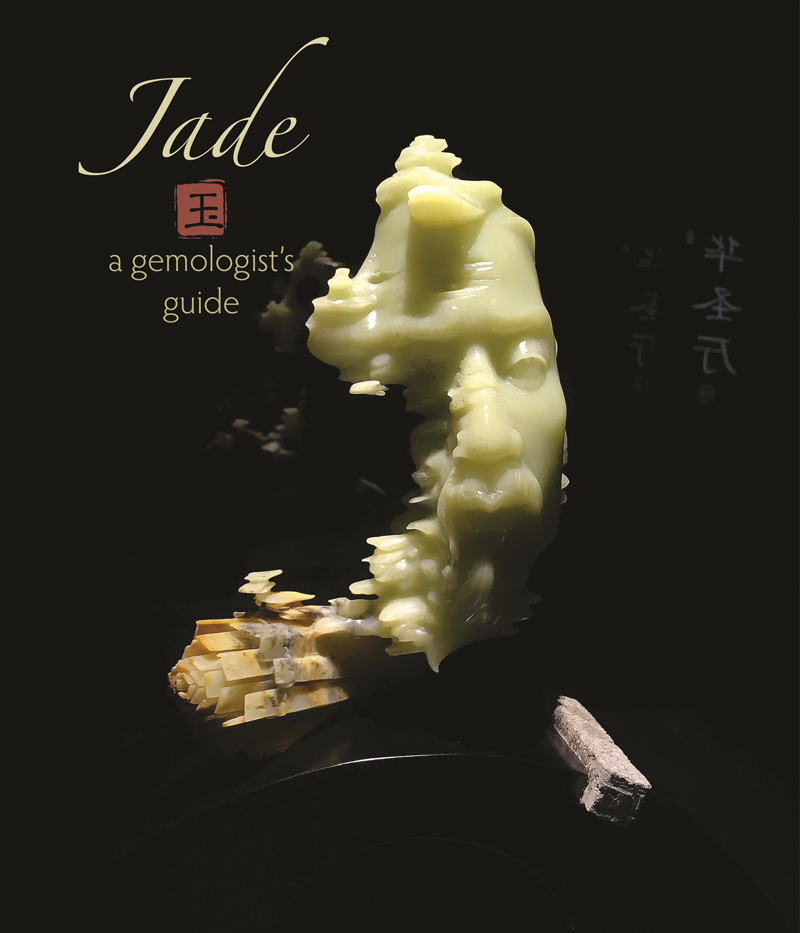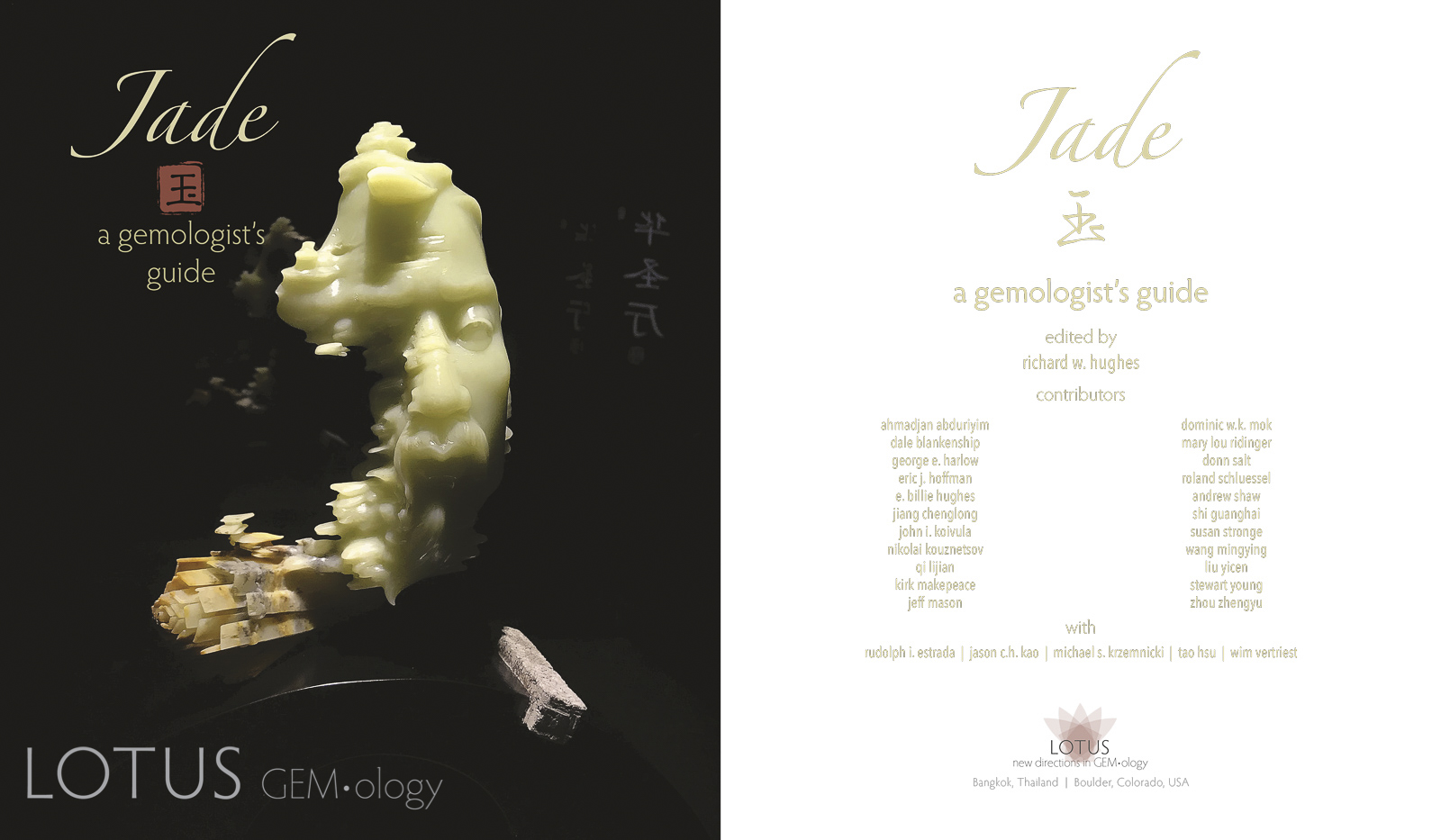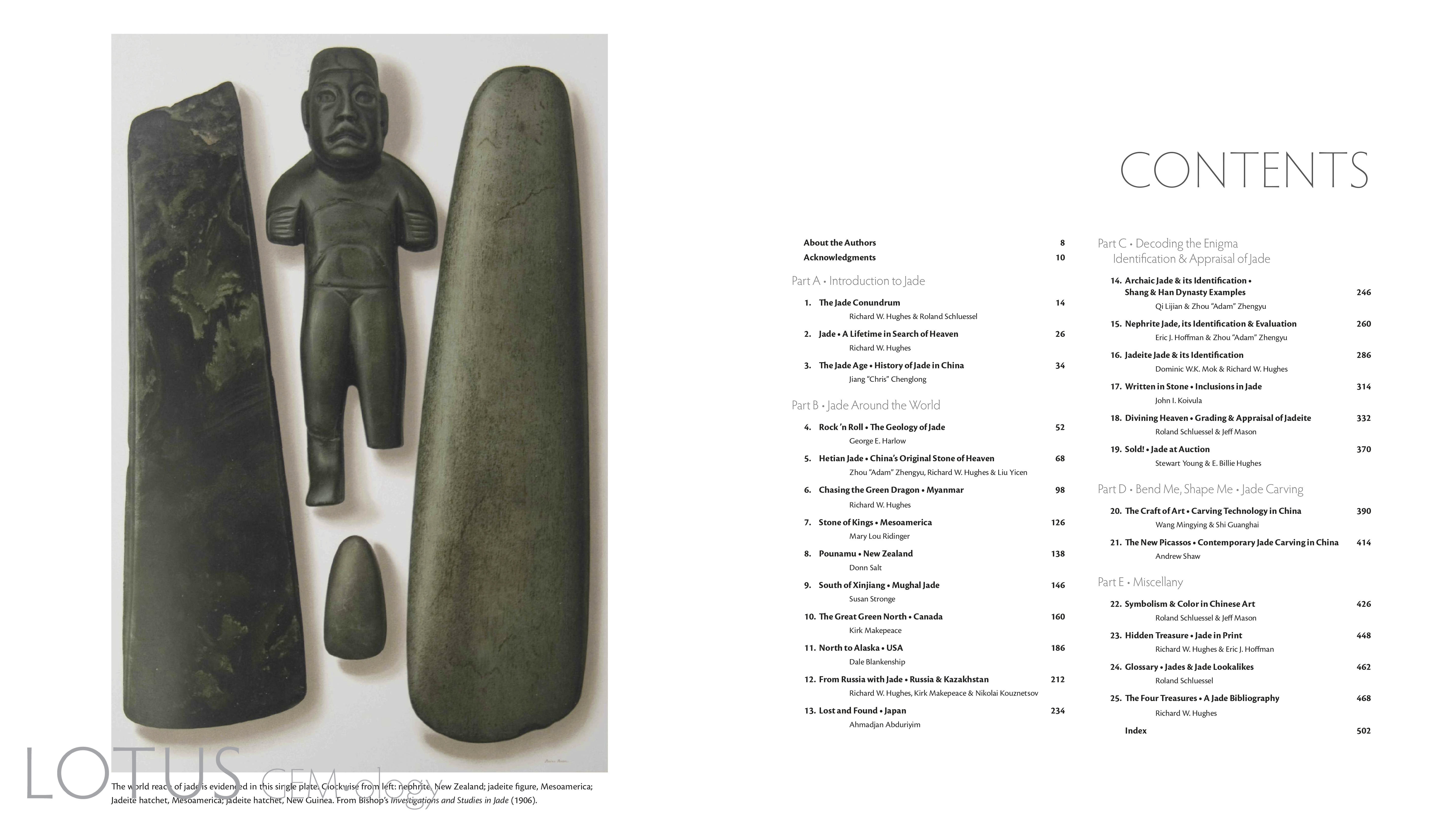imperial jade
-
Book | Broken Bangle | Jade Nomenclature Order Page
Introducing…
Broken Bangle • The Blunder-Besmirched History of Jade Nomenclature
by
Liu Shang-i ('Edward') | Richard W. Hughes
Zhou Zhengyu ('Adam') | Kaylan Khourie
Sponsored byZhuang Qingfang
The Gemmological Association of Hong Kong
On Tung Jewellery
Junhao Gemology
Pinde Xuan
Lotus GemologyBroken Bangle | The Blunder-Besmirched History of Jade Nomenclature takes readers through the entire tortuous history of jade nomenclature, detailing how the current monikers were based on misinformation and misunderstanding of the gems’ true natures. Thus, the Chinese gem yù (amphibole jade) was named “nephrite” by French mineralogist Alexis Damour in the mistaken belief it was the same as the Mesoamerican pyroxene jade that a 16th Century Spanish doctor himself misinterpreted as being used to treat kidney disease (‘nephritus’). Later, Damour created a mineral species he called “jadeite” for what was actually a gem rock already known in China as fei cui.
But this gemological whodunit is much more than a dry recitation of jade nomenclature. It includes a detailed section on the occurrence and mineralogy of both yù (nephrite) and fei cui. Because jade is so intimately connected with Chinese culture, much of the Middle Kingdom’s fascinating history is also woven through its pages.
Did we mention the illustrations? Broken Bangle features dozens of color images of both historical documents and spectacular photos of contemporary jade and stone carving in China. For those whose mental picture of jade sculpture is a cliché Chinese goddess statue, prepare to have your minds blown.
Lead author Liu Shang-i summed up the book’s major aim:
Our understanding of the world is deeply influenced by the names we assign to things. As history, culture, and scientific inquiry evolve, it becomes essential to assign accurate and fitting names to these unique types of jade that embody Chinese heritage. This nomenclature should reflect its cultural significance and resonate with both historical context and contemporary understanding.
Co-author Zhou Zhengyu added:
There is an ancient saying in China termed “casting a brick to attract jade.” Any book or article is only a stage of understanding, and this understanding, if it can be better than before, is progress. Our work is certainly not the last word on the subject, but we hope it will help improve people’s understanding of this gem’s fascinating history and inspire others to research the subject further. Not unlike a brick thrown in the hopes of attracting jade.
This edition of Broken Bangle is limited to just 600 copies. Don’t miss this chance to enjoy not just superb scholarship, but also extraordinary examples of China’s modern jade culture.
Comments from reviewers…
"A readable work of art…"
— John Koivula, Gemological Institute of America
"This book [is] not only a work of scholarship but of art…"
— Anne Carroll Marshall, Journal of the Gemmological Association of Hong Kong
"Beautifully illustrated and a pleasure to read… a valuable contribution not only for the gemologist, but for all who deal with jade jewelry."
— Eric Hoffman, Hoffmanjade.com
"Whether you are a hardcore gemologist or just a garden-variety jade lover, Broken Bangle is the book for you. Buy it, read it yourself, and give it away. I enthusiastically give Broken Bangle two thumbs up!"
— Jeffery Bergman, International Gem Society
"…a splendid book"
— John Saul, geologist and author
"Wow, beautifully done, a must have to expand one's knowledge of jade."
— Georg Schmerholz, master jade carver and author
Hardcover | Published September 2024
THB2100 (~US$60)
120 pages; 240 x 280 mm (9.45 x 11 inches), 1 kg (2.2 lb)
Full Color ThroughoutSold Out
Check out our coffee-table style book Inside Out
Title Page & Table of Contents
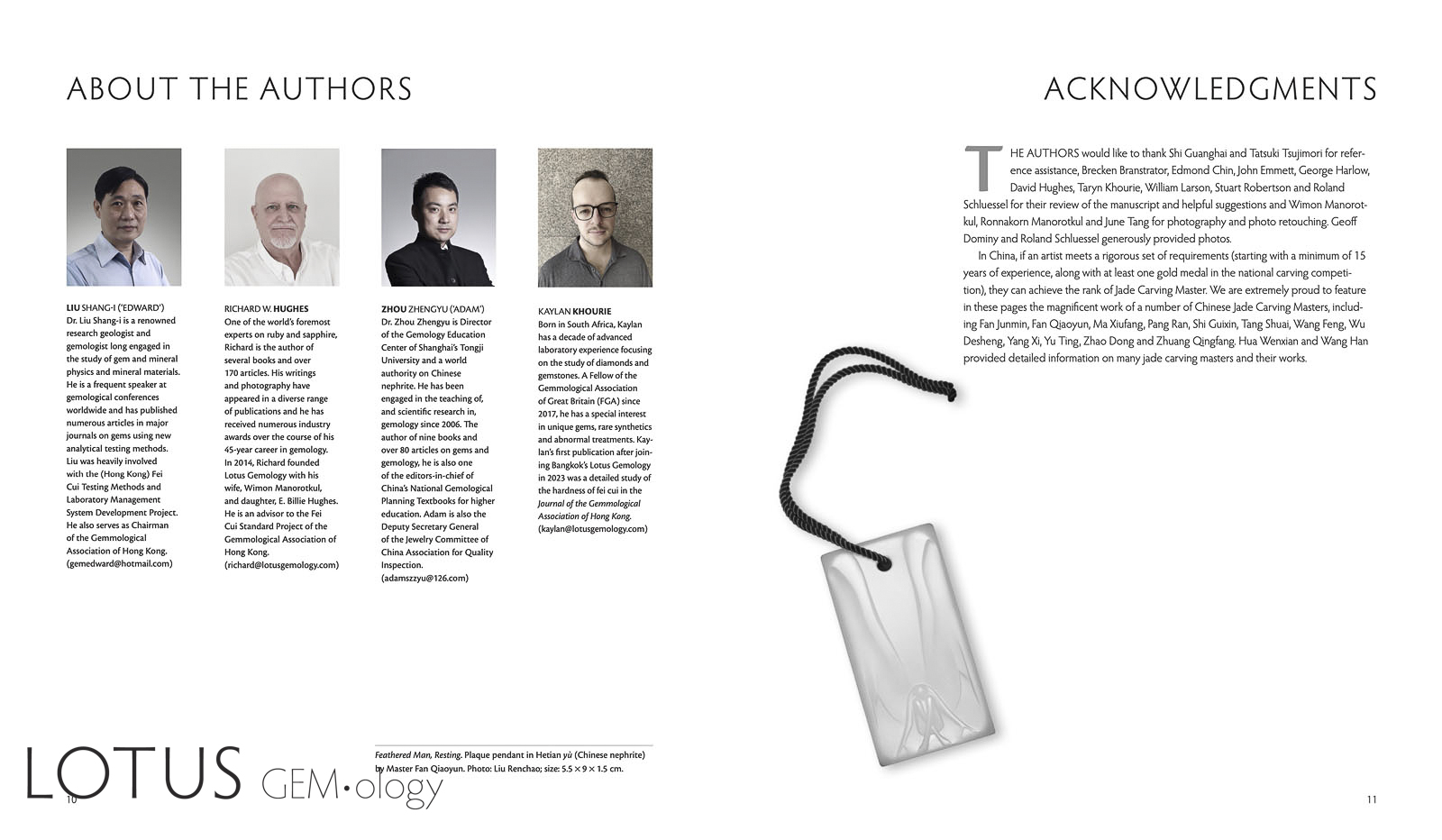
Sample Interior Spreads
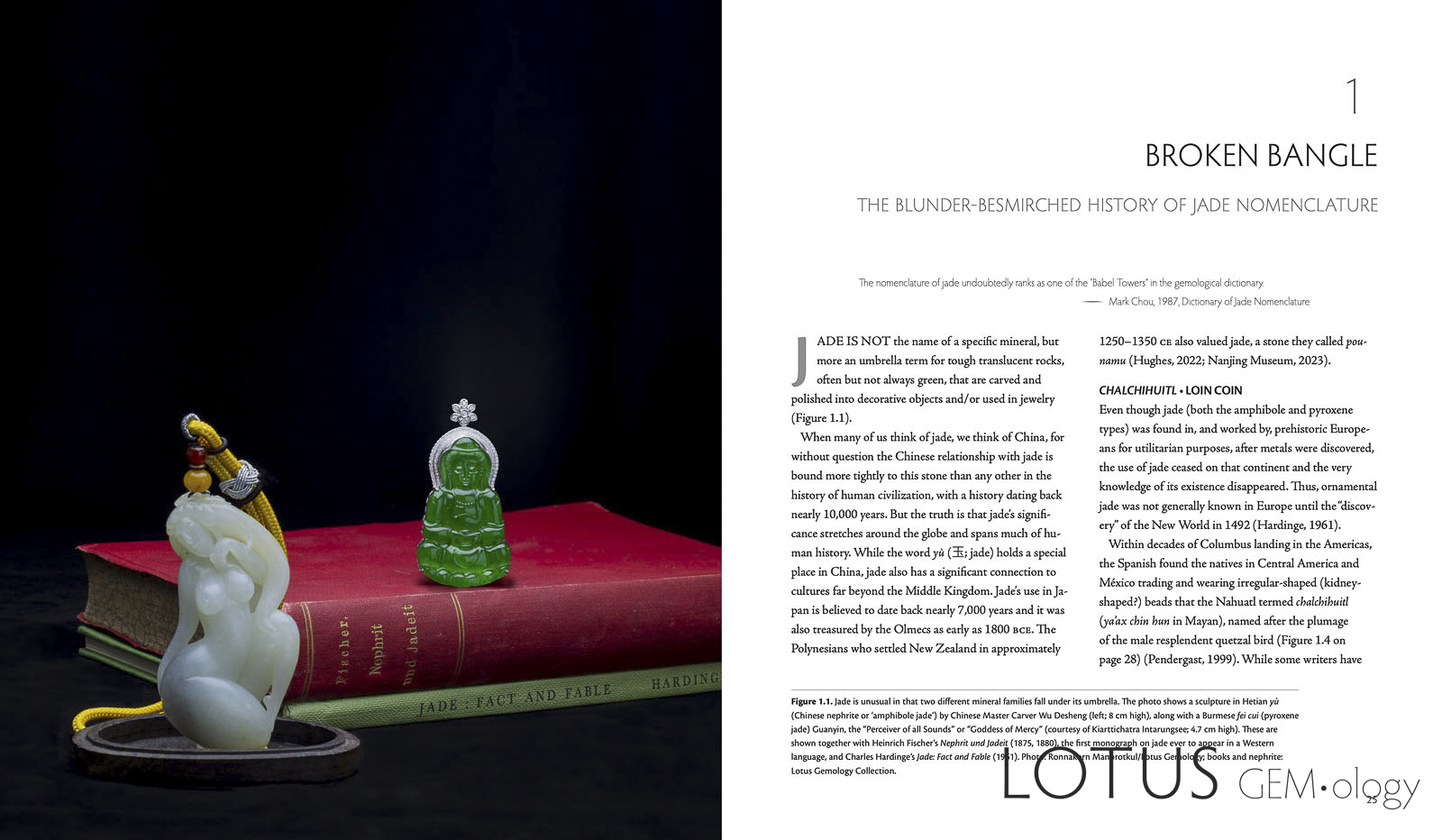
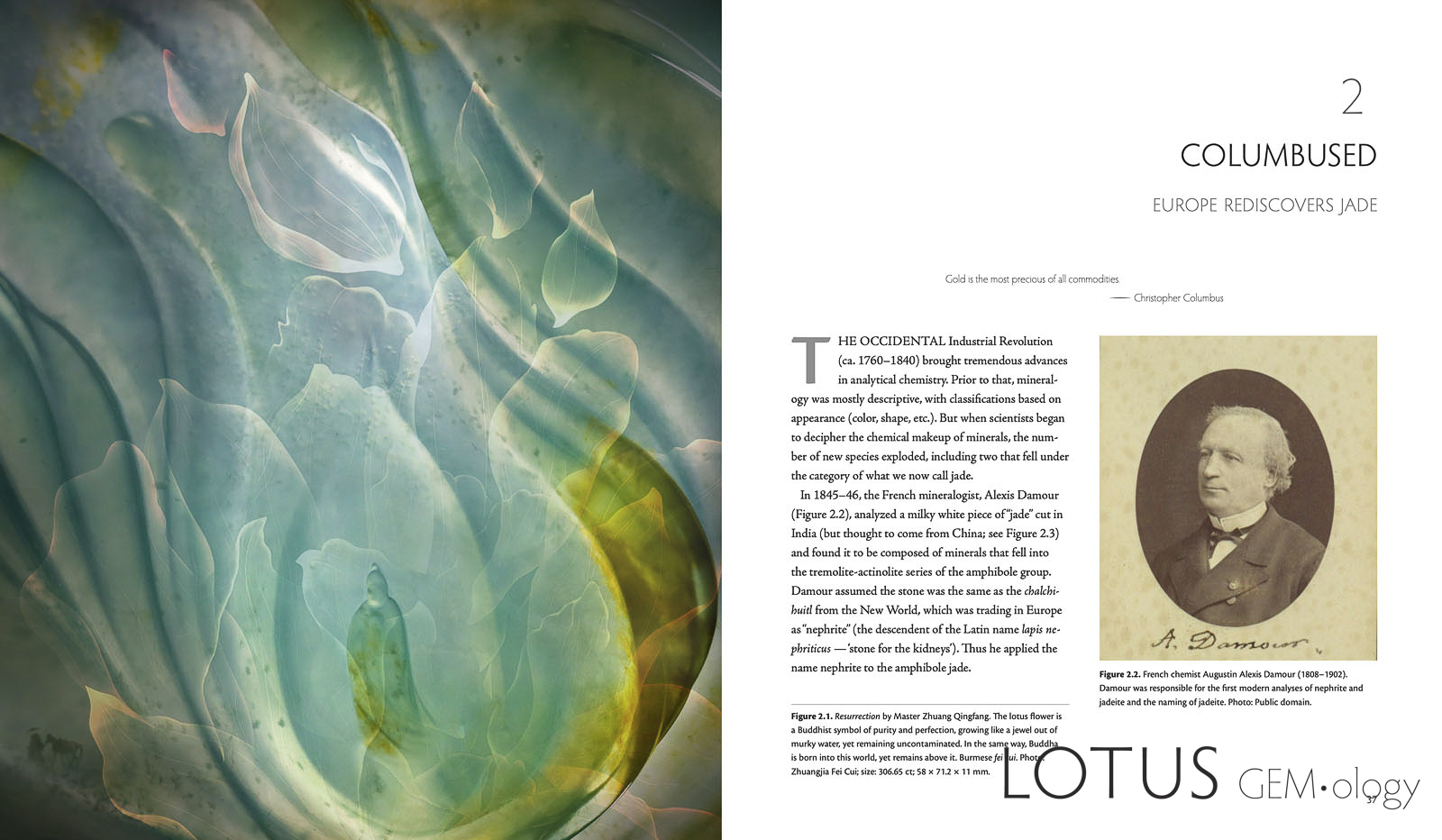
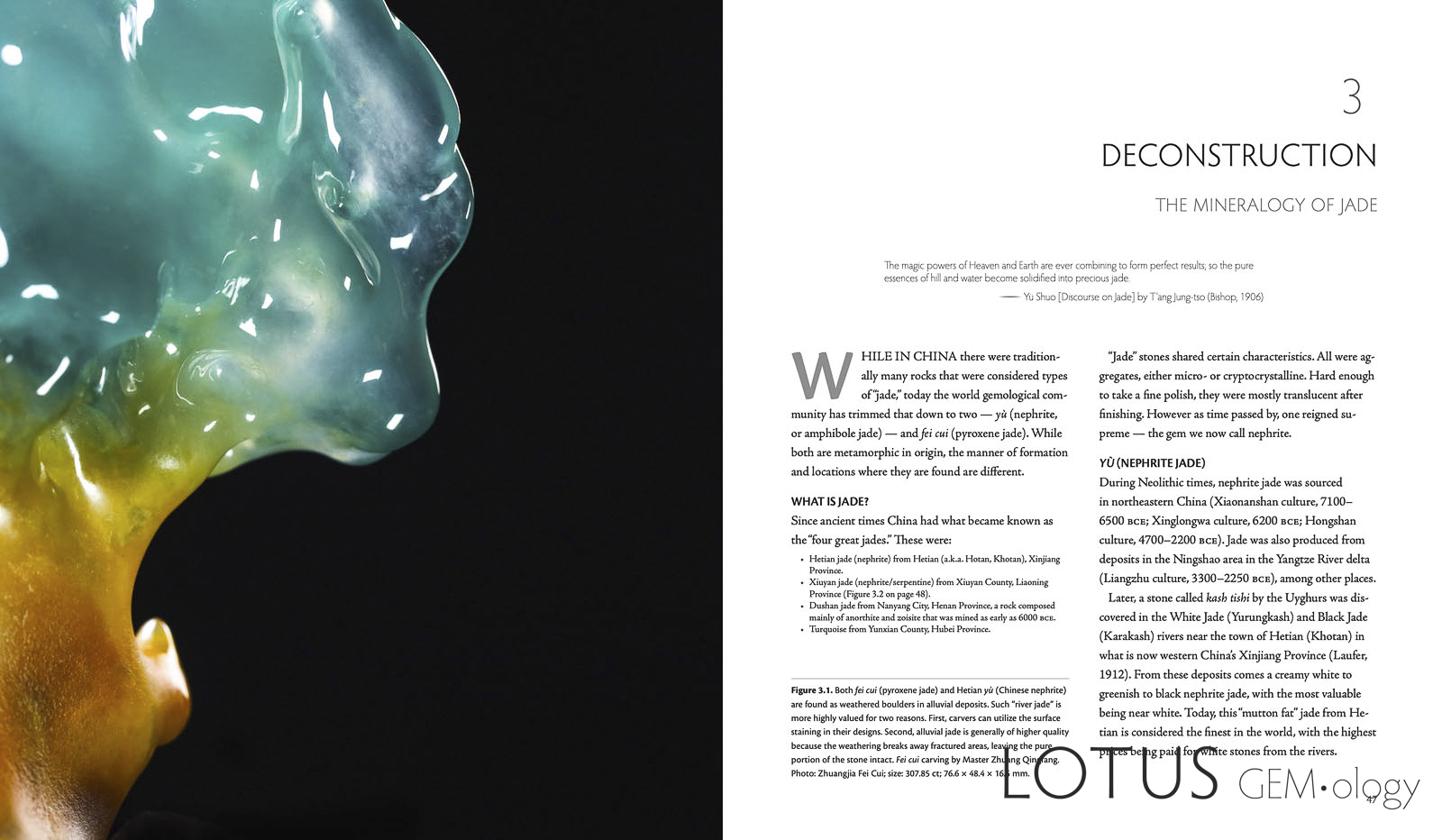
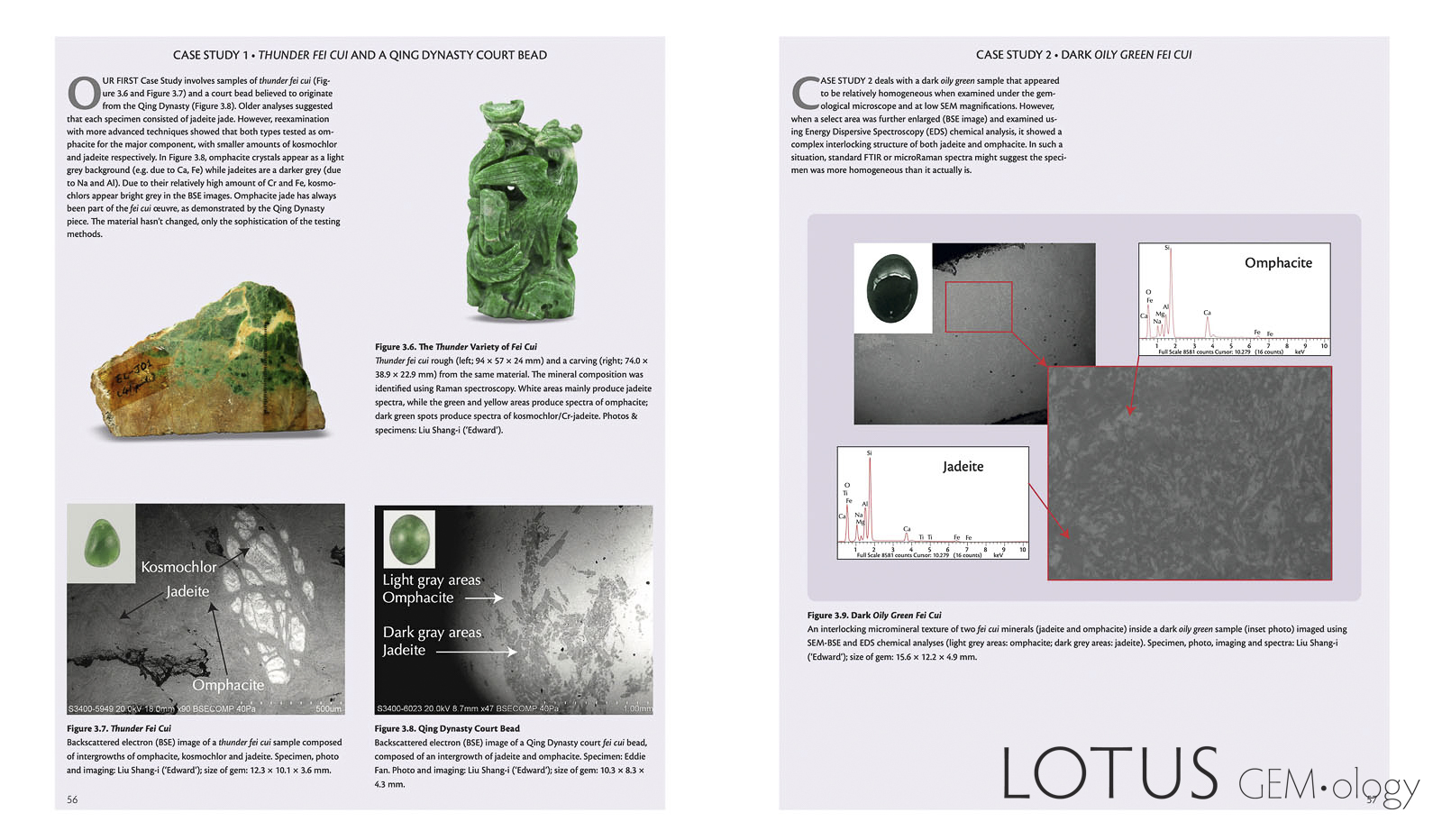
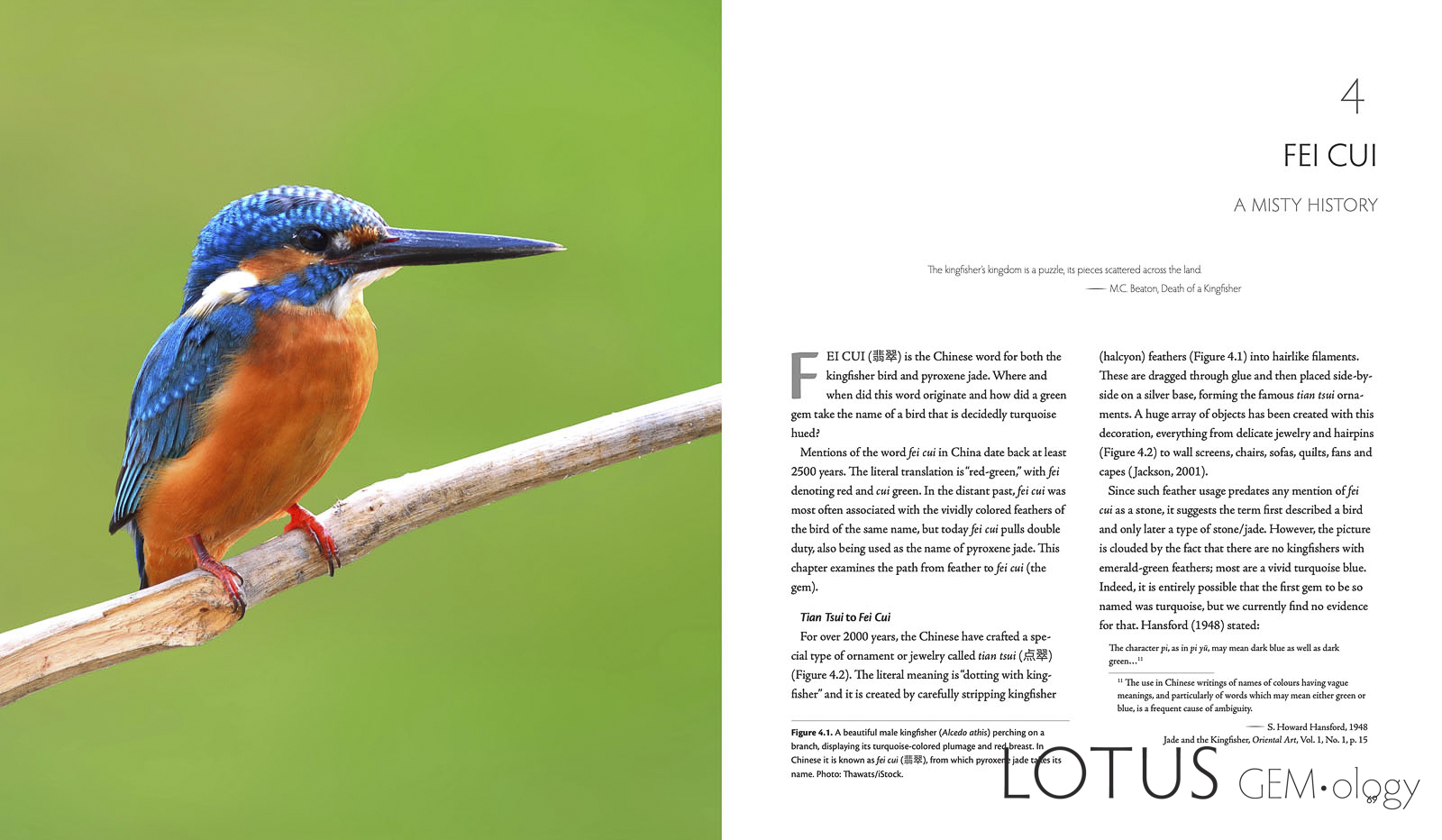
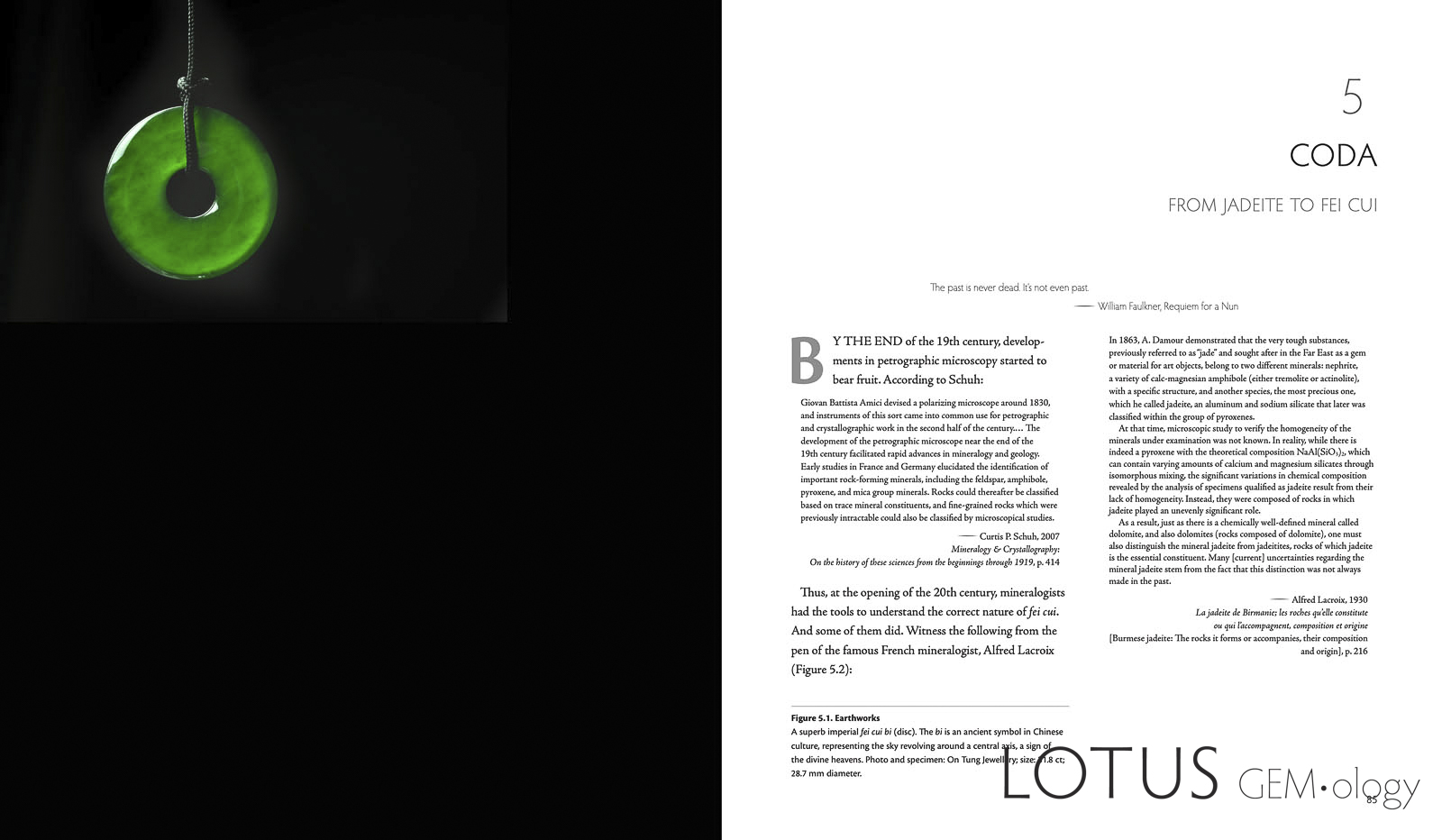
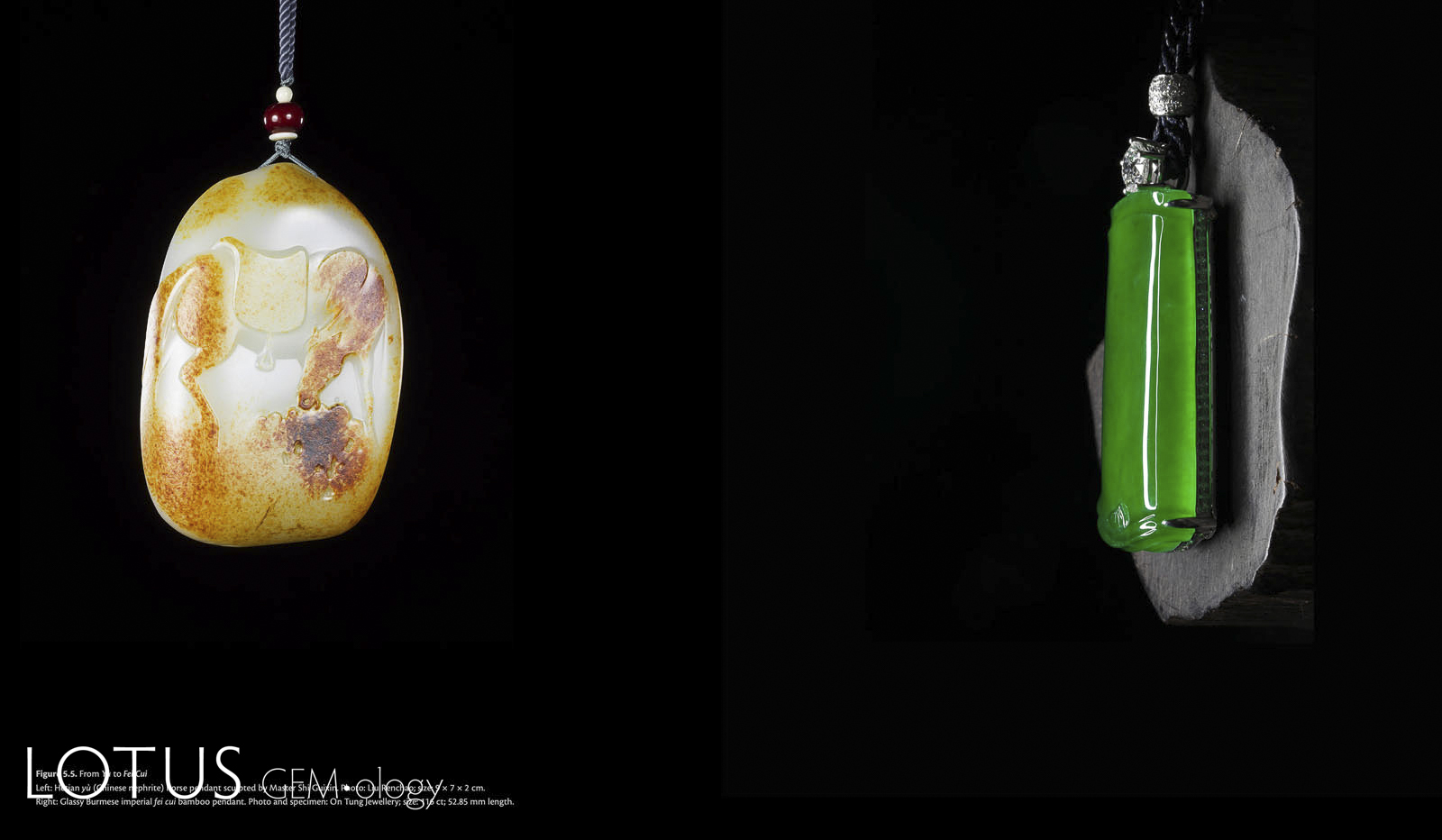
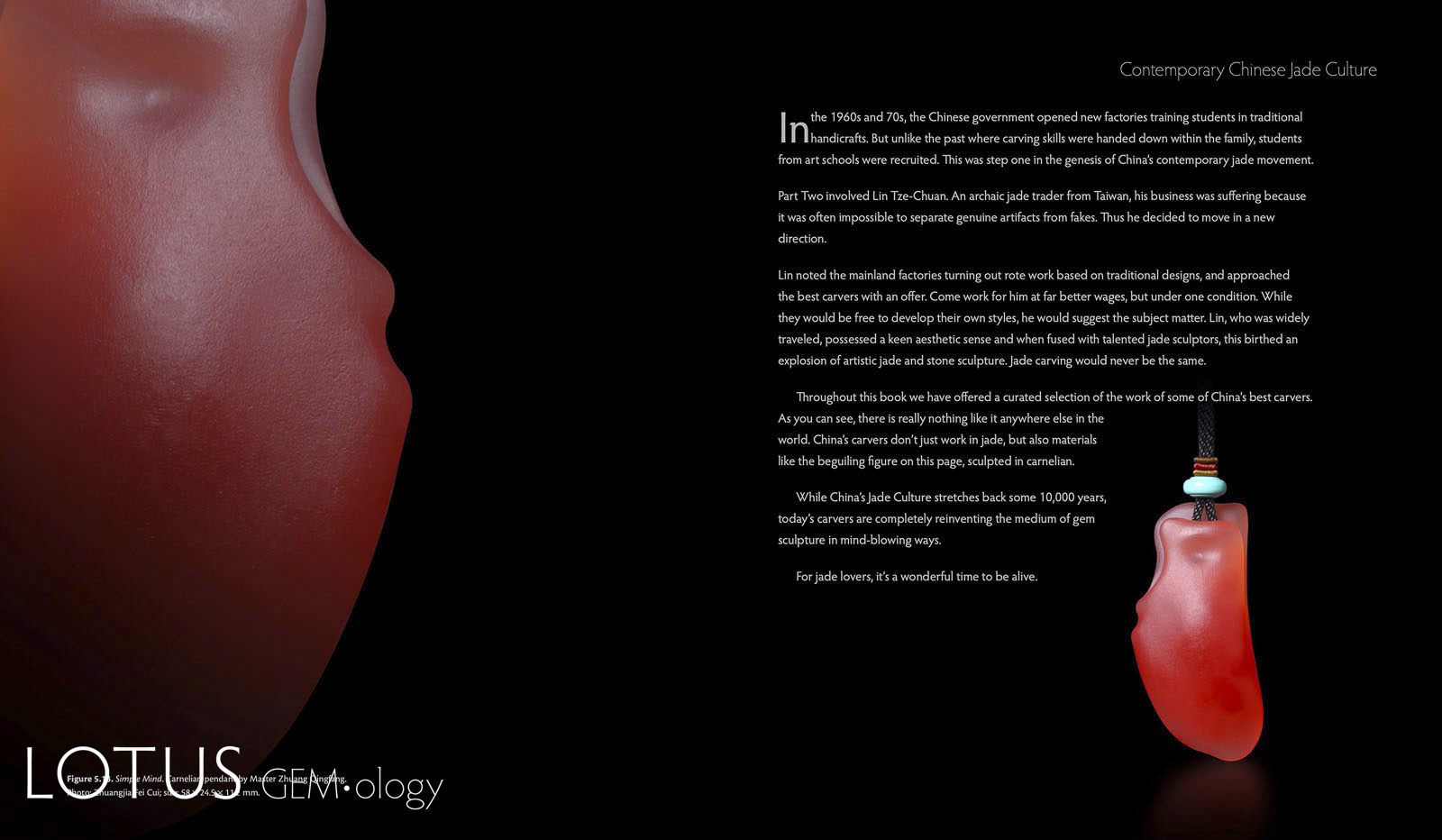
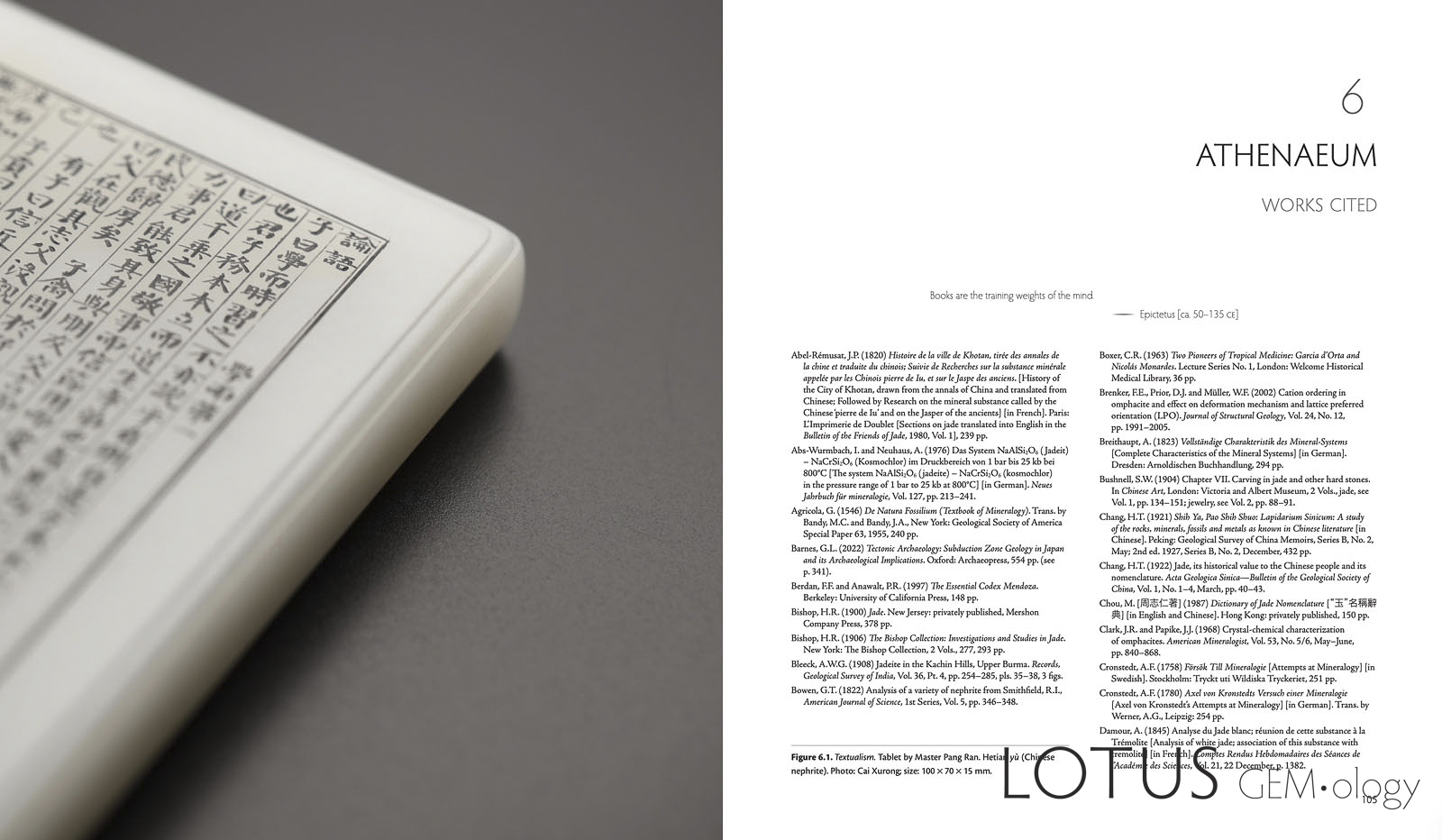
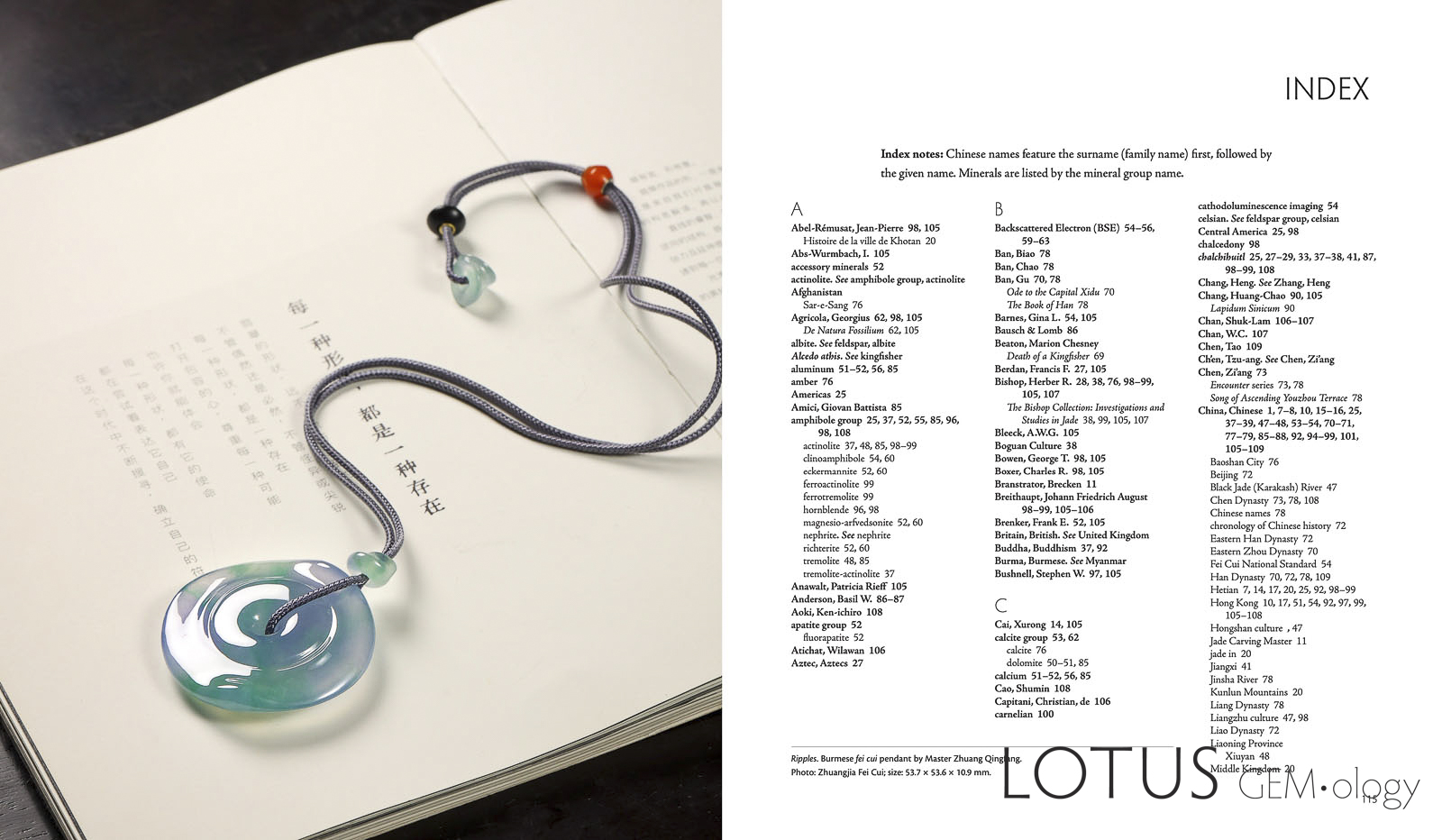
-
Book | Heinrich Fischer's Nephrite and Jadeite
Introducing…
Heinrich Fischer's Nephrite and Jadeite
translated and edited by
Richard W. HughesA Gemological Masterpiece Translated into English for the First Time
In 1875, Leopold Heinrich Fischer (b. 1817; d. 1886) published an extraordinary work on jade, Nephrit und Jadeit, by far the most comprehensive ever to appear. Fischer examined jade not just from China, but from around the world. His book was the first ever to appear in a Western language entirely devoted to jade as we know it today.
As you thumb through the pages that follow, the depth of Fischer’s work will amaze. There is an astonishing amount of detail here. That this could be the product of a single author is simply beyond belief.
Fischer goes on and on, as he tracks virtually every Western (and some Oriental) source. One senses an obsession, days in cold museums and libraries examining dusty texts, sleepless nights poring over a candle-lit desk scratching out sentences with a quill, condensing this enormous body of human history into a book of just a few hundred pages. It is truly astounding and a book that will delight those who open its pages.
This English translation includes a special 43-page appendix containing full bibliographic details of all the references cited by Fischer, as well as additional references on jade in both Western languages and Chinese, making it a valuable resource for scholars.
ABOUT THE AUTHOR
Leopold Heinrich Fischer (1817–1886) was a German polymath; born Freiburg i Breisgau; studied medicine at Freiburg/Vienna; practiced in Freiburg; fac U Freib zool, mineralogy, associate professorship 1845; professorship 1859; broad range of interests, noted for his many publications on entomology, microscopy, mineralogy, archeology, advanced study of insect taxonomy; later in life famous for studies of Stone Age implements & their distribution.
Hardcover | Published February 2025
Price: $195
638 pages; 189 x 246 mm (7.44 x 9.68 inches), 1 kg (2.2 lb)
Scattered Color Illustrations
Please note that this book is Print-On-Demand; as a result, the quality of printing willl not be the same as the exceptional quality of our other books which are printing on an offset press.CLICK HERE TO BUY NOW AT LULU.COM
Sample Spreads

-
Book | Jade | A Gemologist's Guide | Limited Edition Order Page
Thank you for reserving
Jade • A Gemologist's Guide
Limited EditionTo proceed with your order, please select your shipping destination below.
This page is for clients that reserved single copies of the limited edition book. Please only add one copy of the limited edition to your cart. -
Book | Jade | A Gemologist's Guide | Order Page
Introducing…
Jade • A Gemologist's Guide
edited by
Richard W. Hughes
featuring contributions from…
Ahmadjan Abduriyim • Dale Blankenship • George E. Harlow • Eric J. Hoffman • E. Billie Hughes • Richard W. Hughes • Jiang “Chris” Chenglong • John I. Koivula • Nikolai Kouznetsov • Liu Yicen • Kirk Makepeace • Jeff Mason • Dominic W.K. Mok • Qi Lijian • Mary Lou Ridinger • Donn Salt • Roland Schluessel • Andrew Shaw • Shi Guanghai • Susan Stronge • Wang Mingying • Stewart Young • Zhou "Adam" Zhengyu
with…
Rudolph I. Estrada • Tao Hsu • Jason C.H. Kao • Michael S. Krzemnicki • William F. Larson • Wim Vertriest
Sponsored by the Houston Museum of Natural ScienceThe study of jade is unlike that of any other gem, trespassing across conventional boundaries, particularly those of the gemological and mineralogical realm. Despite the march of mineralogical orthodoxy and conformity, the word “jade” is a fist in the air of protest, crying out not for further reduction and definition, but an expansion of the mineralogical canon to include the cultural aspects of human civilization and life. Because jade is so much more than a simple census of atoms, valence states, and places of residence. Jade is a lexicon liberator.
While the literature on jade is vast, perhaps greater than any other gem, there is a distinct lack of a volume in English that treats jade as a gemological material. This book is designed to fill that gap, with extensive information on the history, sources, appraisal and identification of both treated and imitation jades. All of this is together in a single volume for the first time, making it a must-have for collectors, dealers, gemologists, appraisers, curators and anyone else with an interest in this fascinating gem.
An understanding of jade is not limited to the technical or exacting; it also incorporates a feeling for the cultural, textural, and ephemeral qualities that make the study of this gem unlike any other. This volume will not just fill the “traditional gemological” gap, but will open readers’ eyes to a world beyond. Because jade is so much more…
•
Publishing: 2022
Standard Edition Hardcover with Dust Jacket
US$200
534 pages; 240 x 280 mm (9.45 x 11 inches), 2.75 kg (6 lb)
Full Color ThroughoutSpecial Limited Edition of 100 Signed and Numbered Copies Bound in Thai Silk with Slipcase
US$300 (Sold Out)
Title Page & Table of Contents
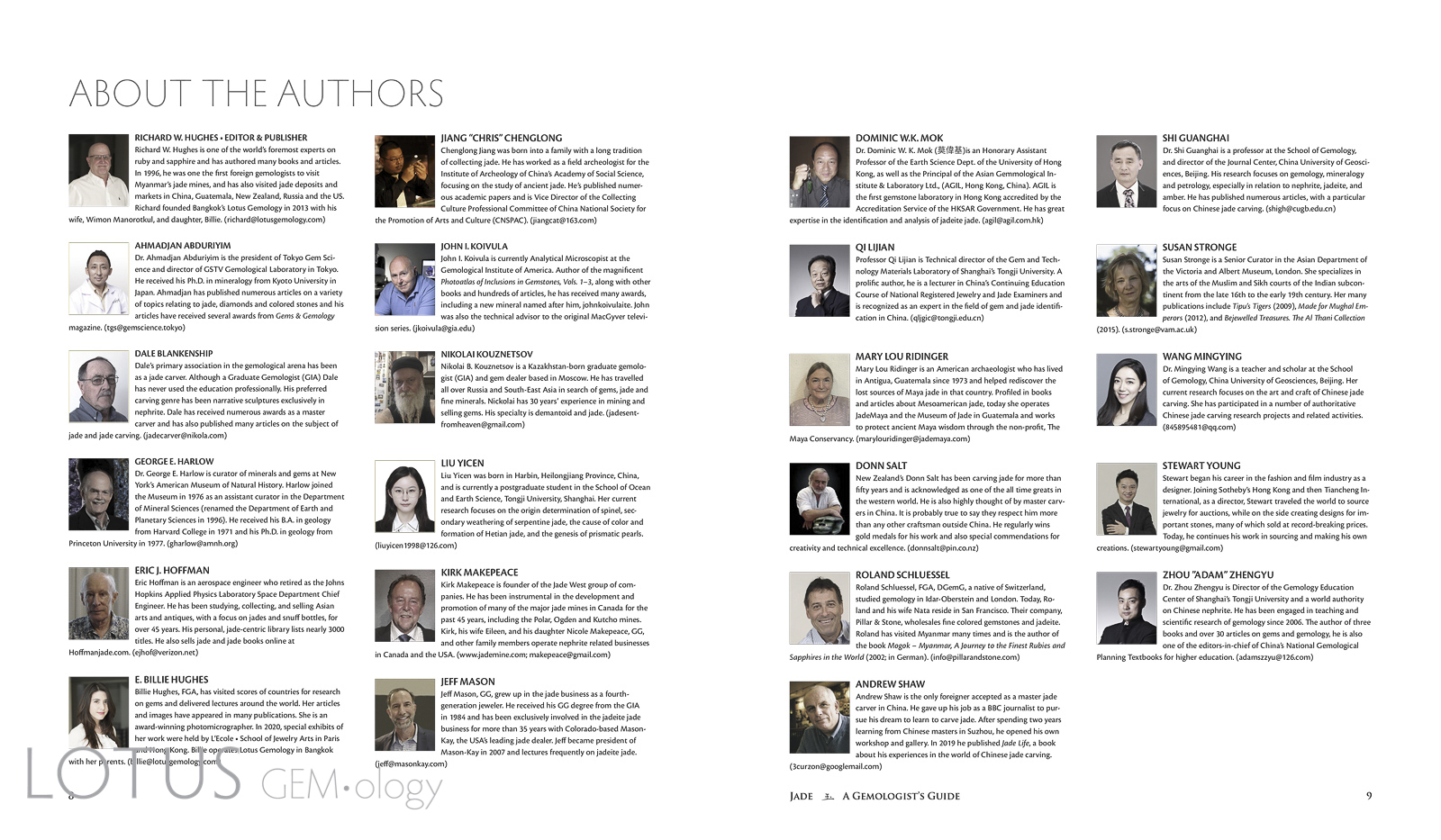
Sample Interior Spreads
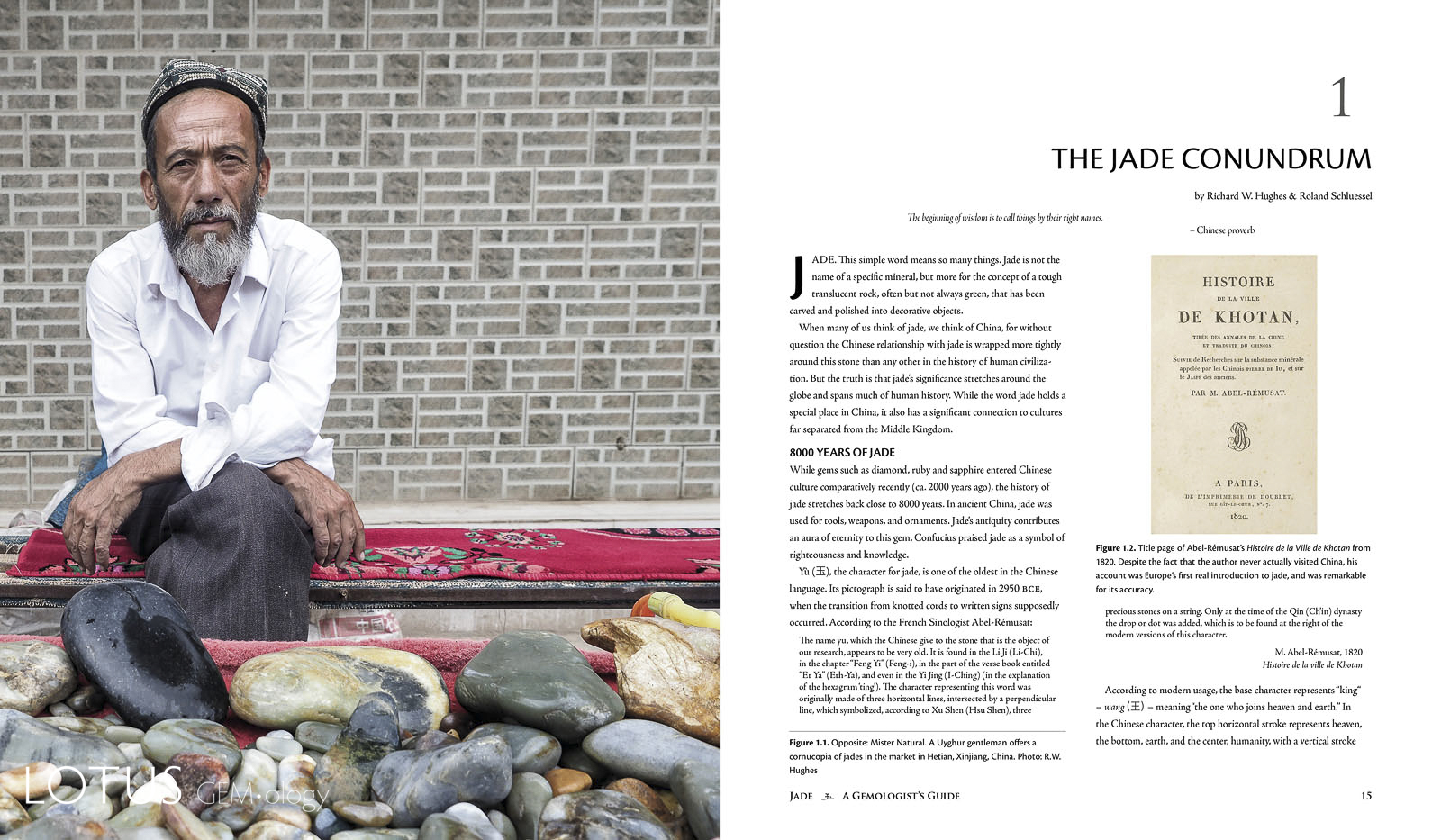

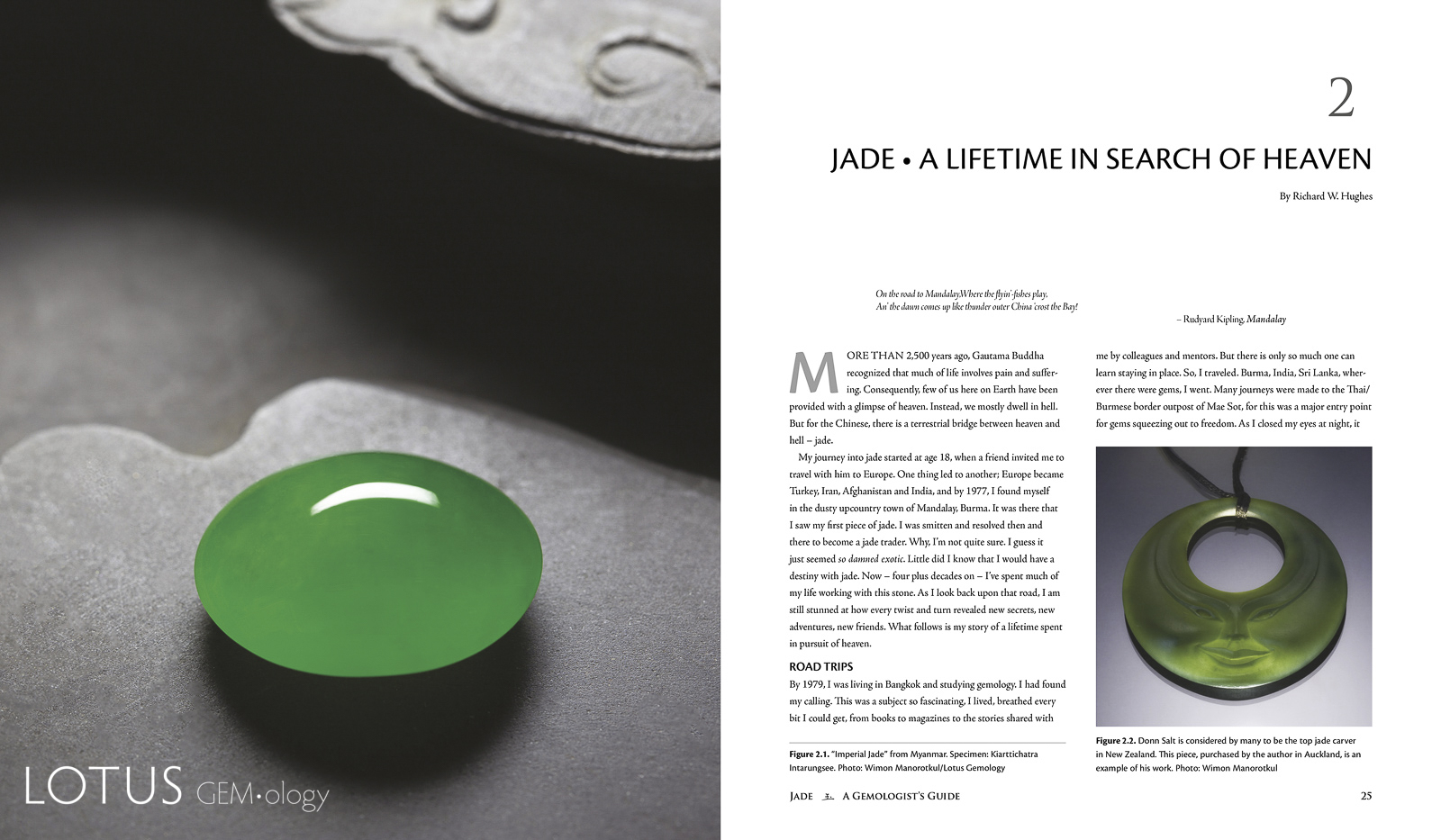
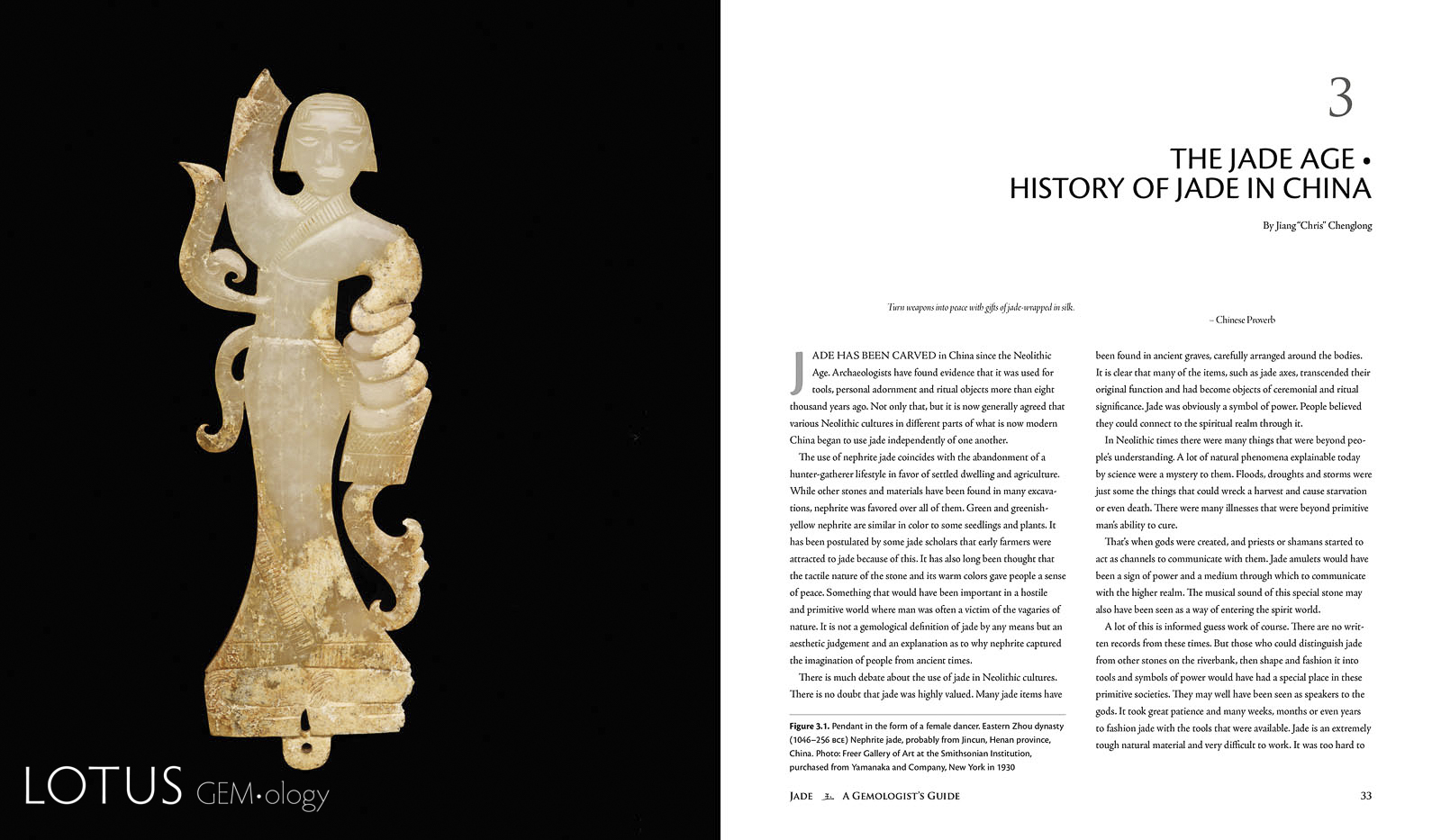
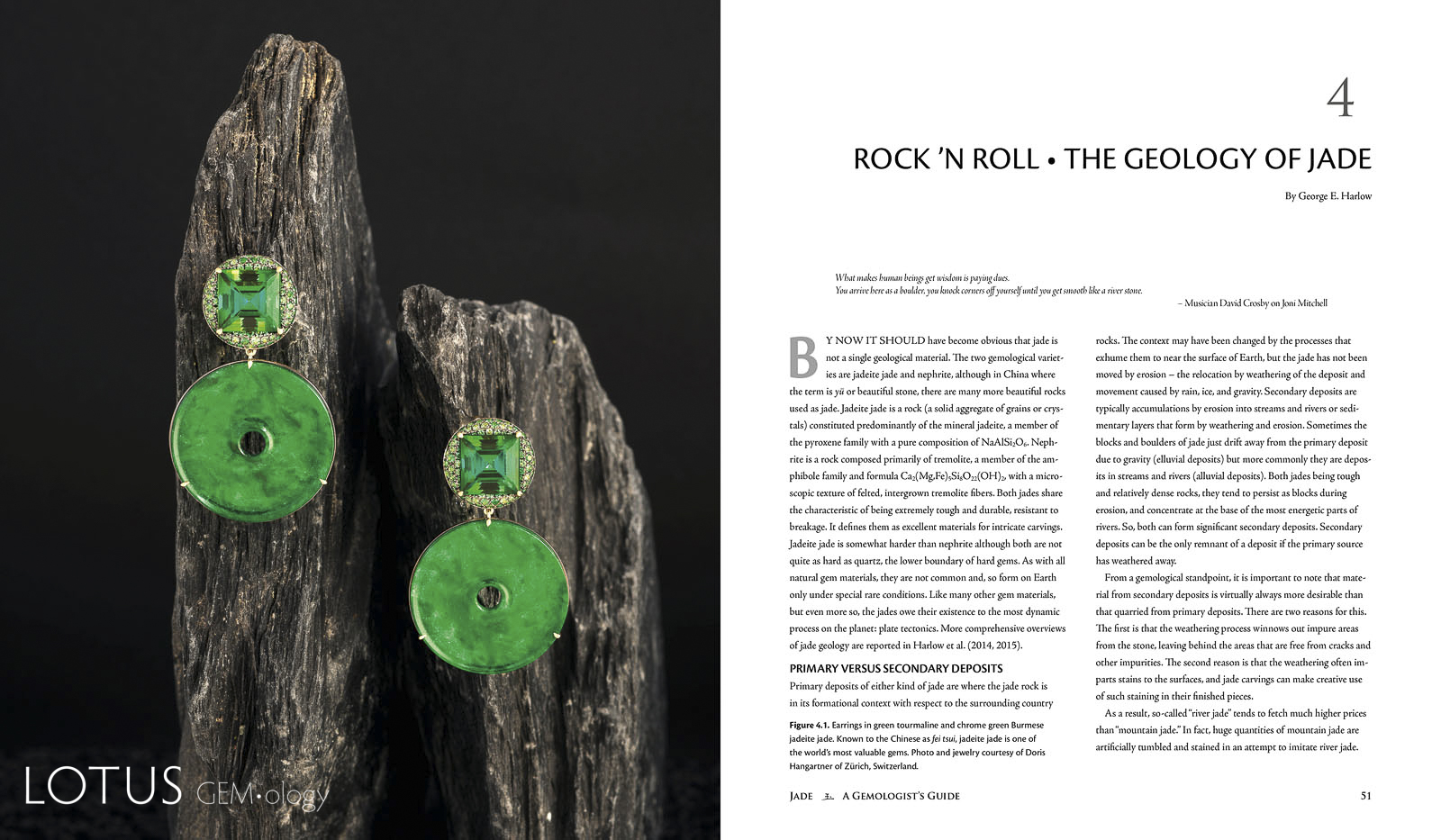
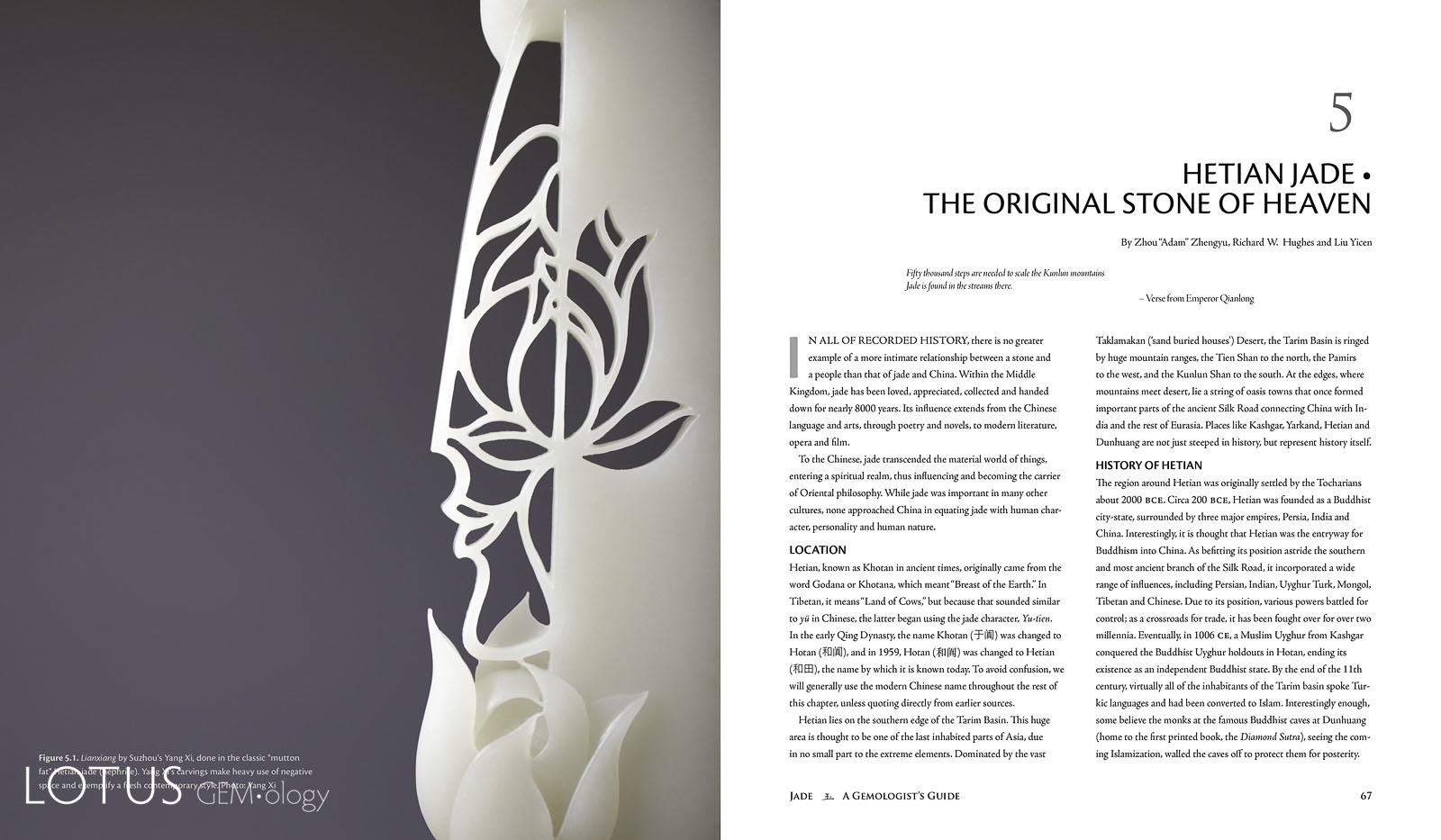
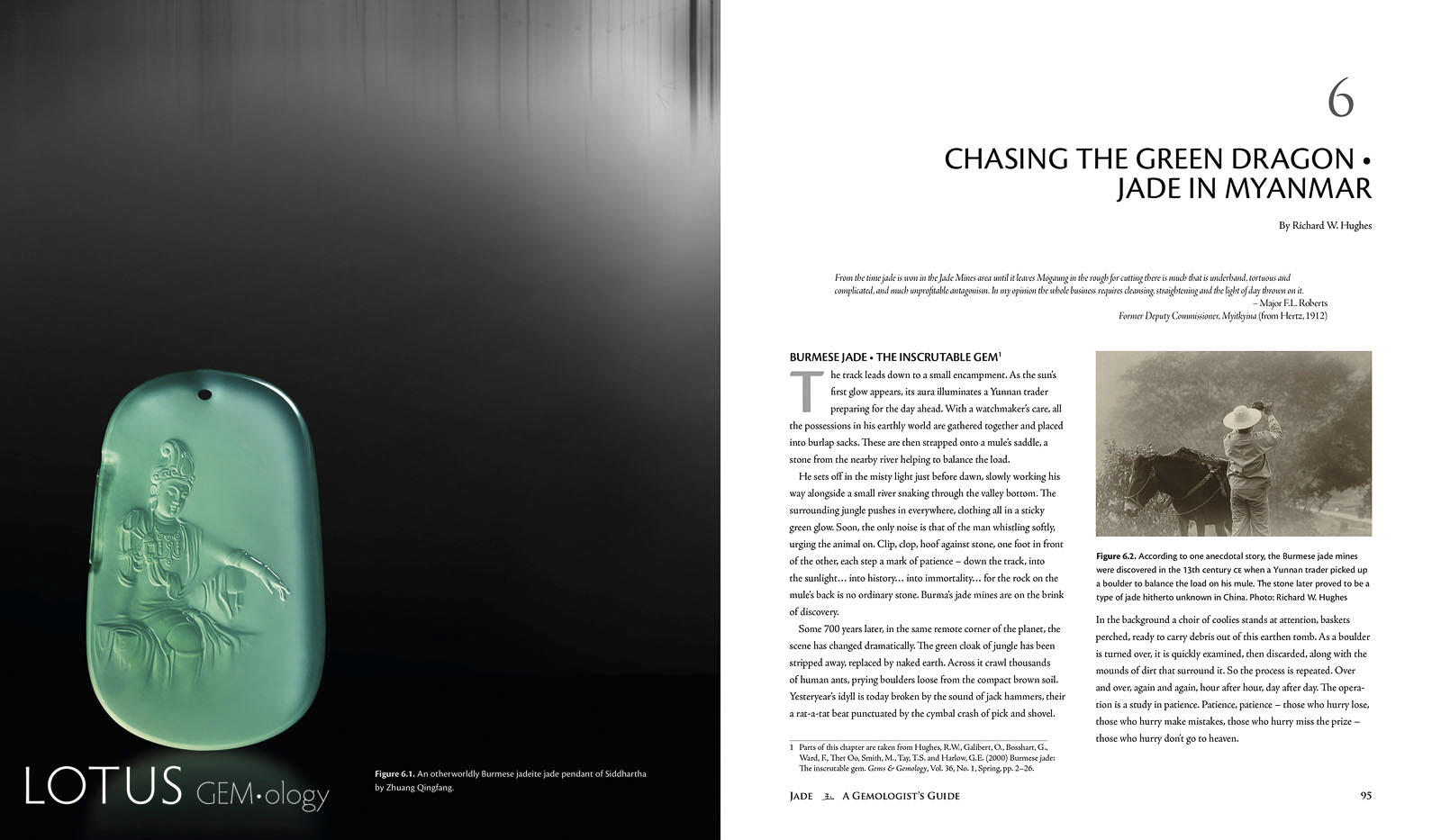
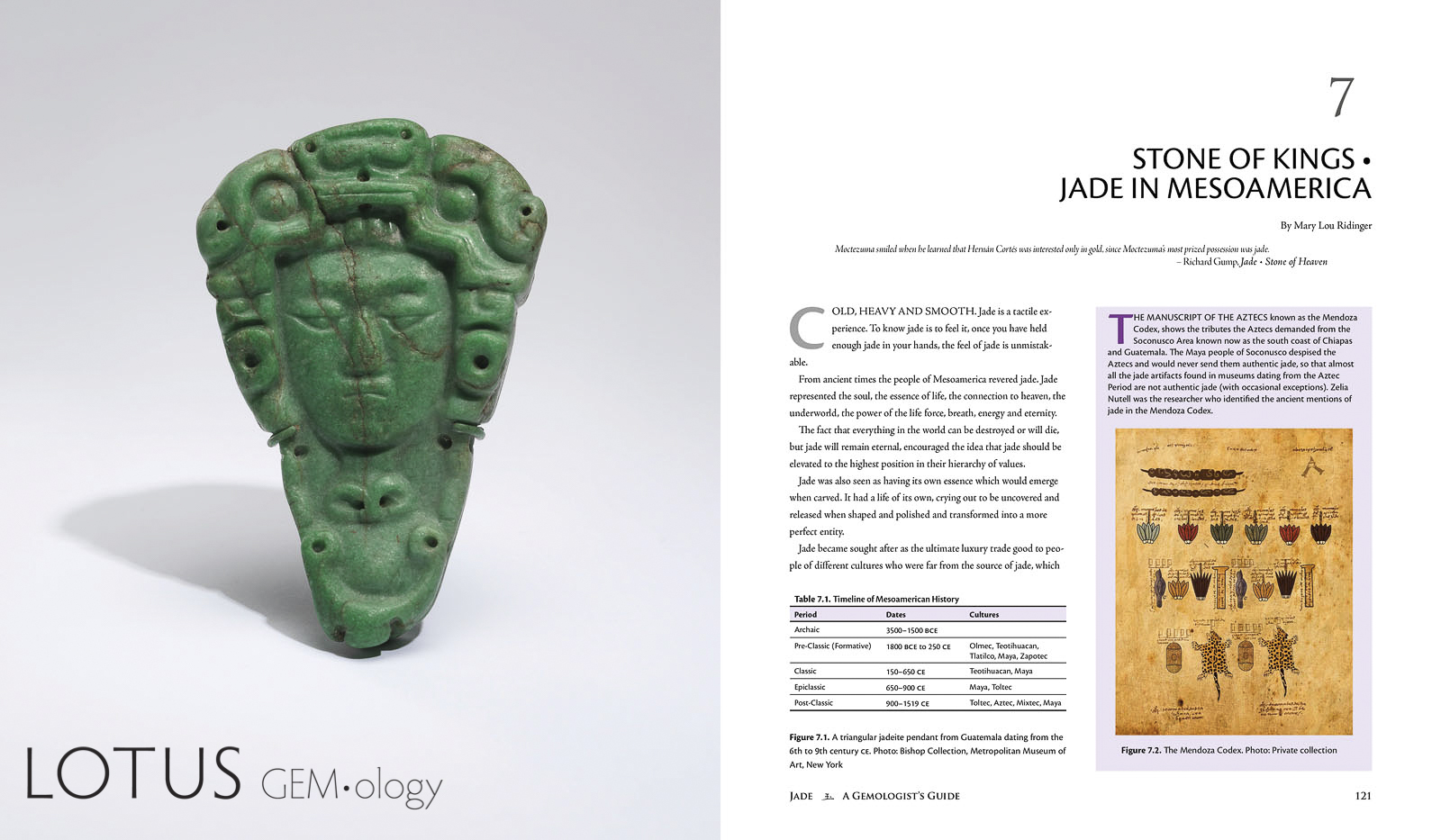
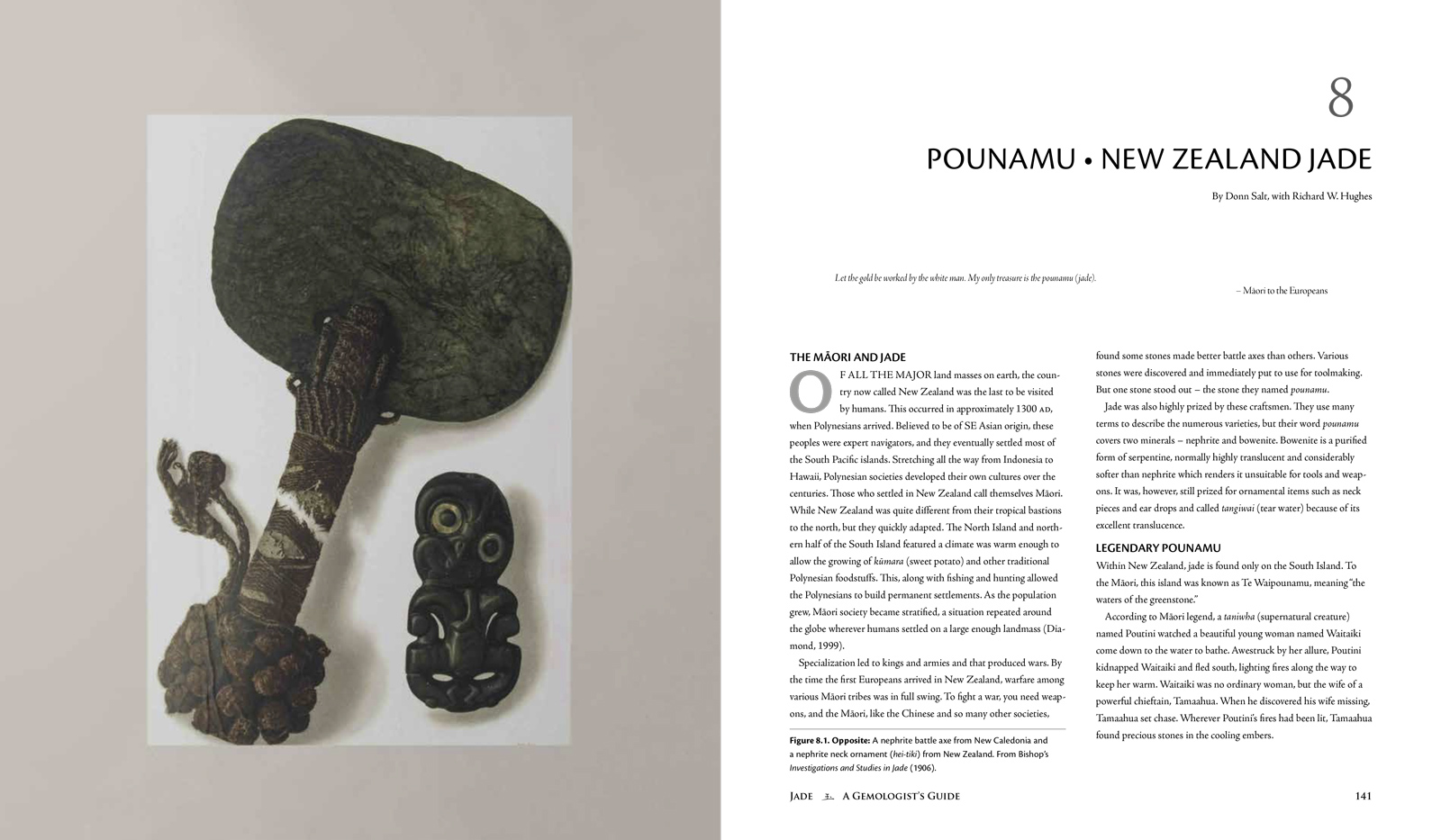
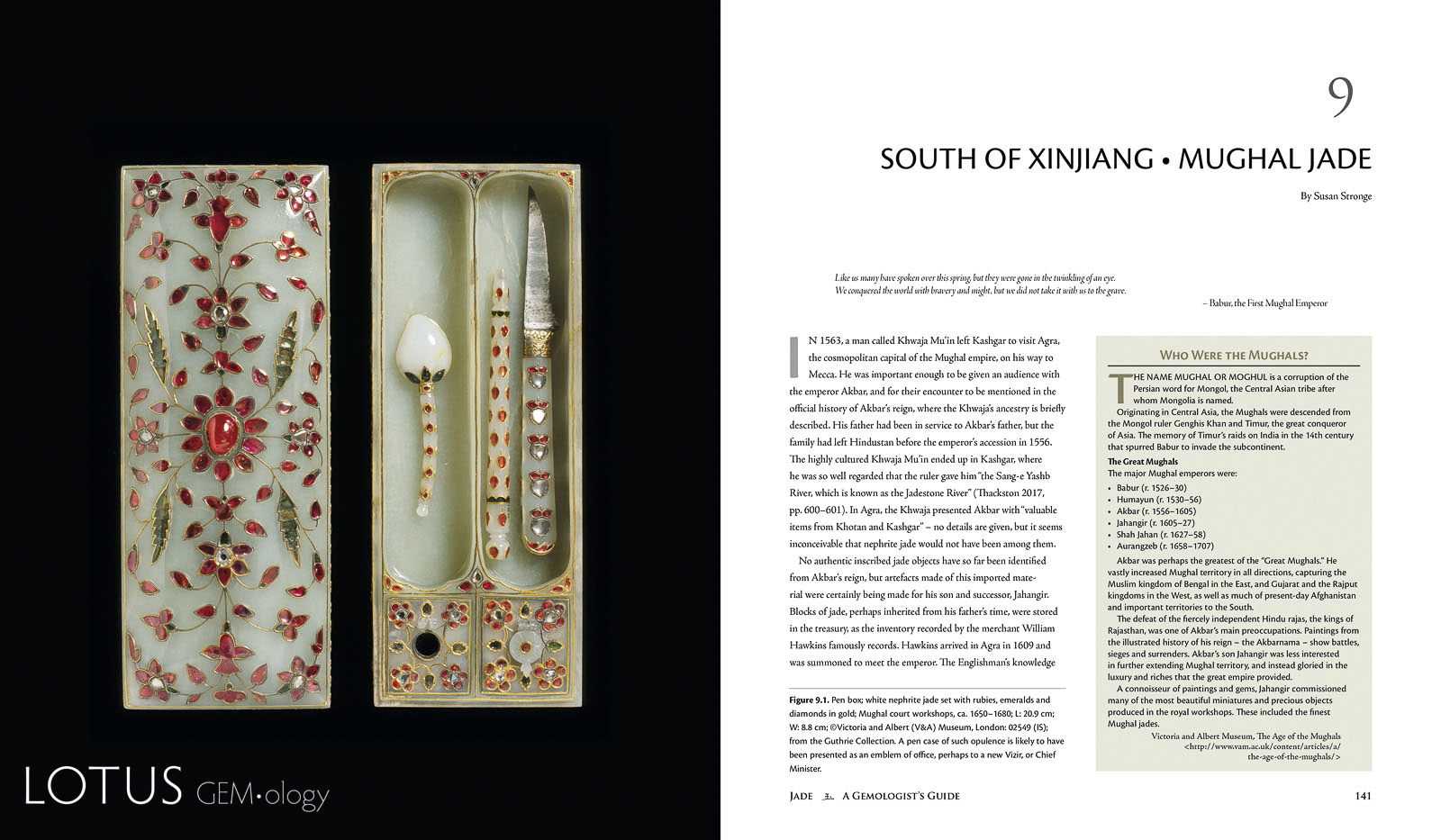
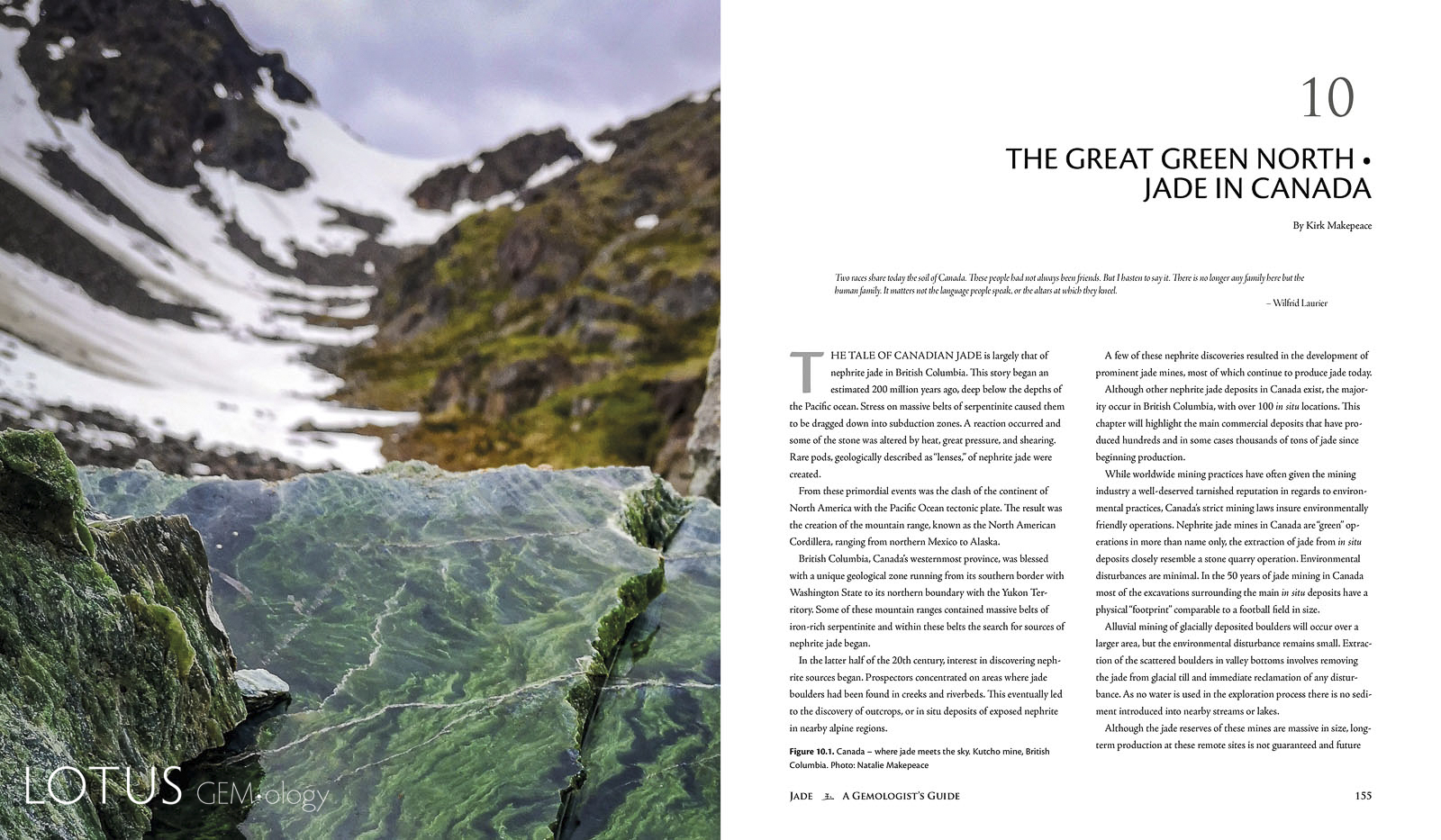
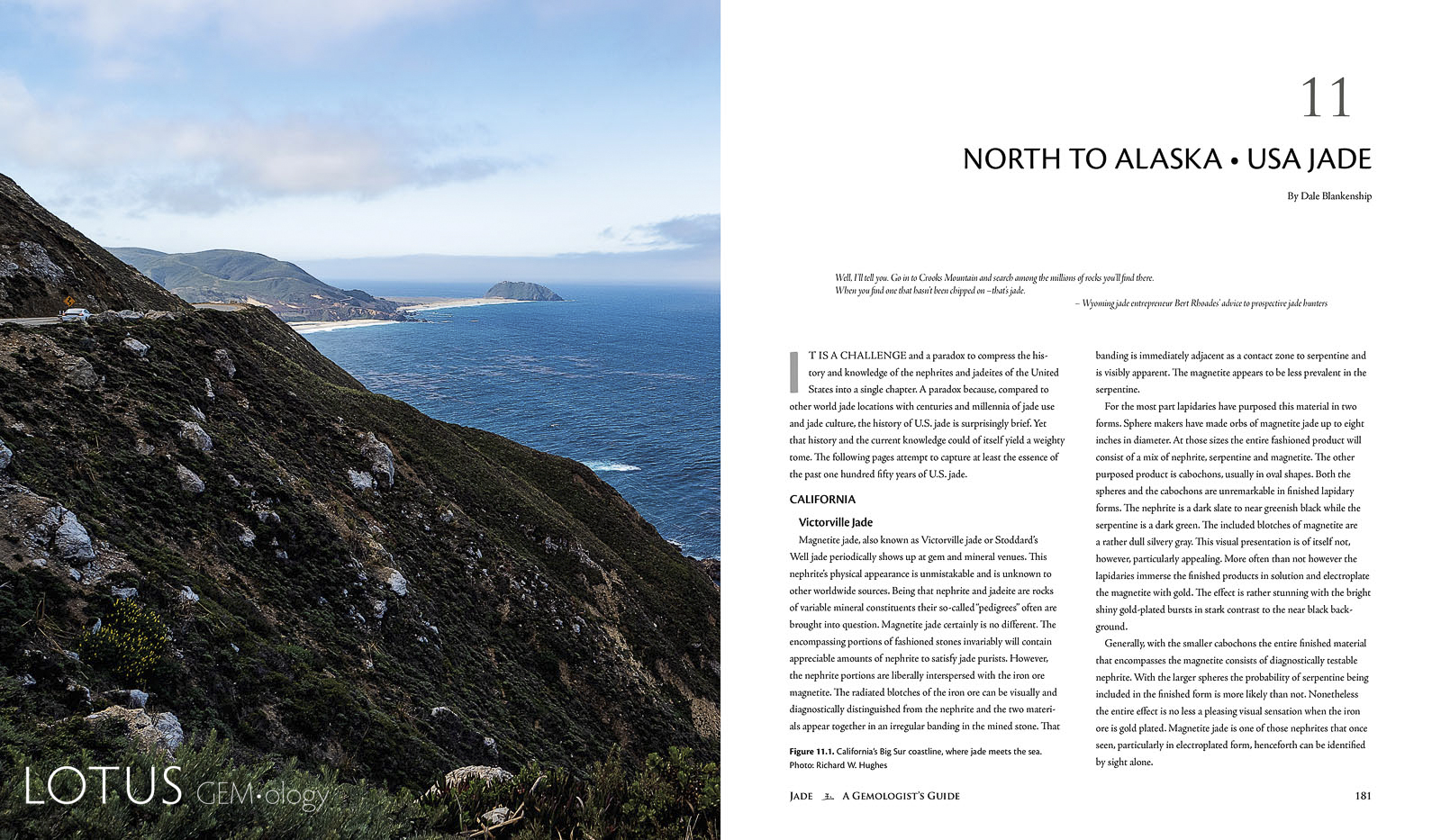
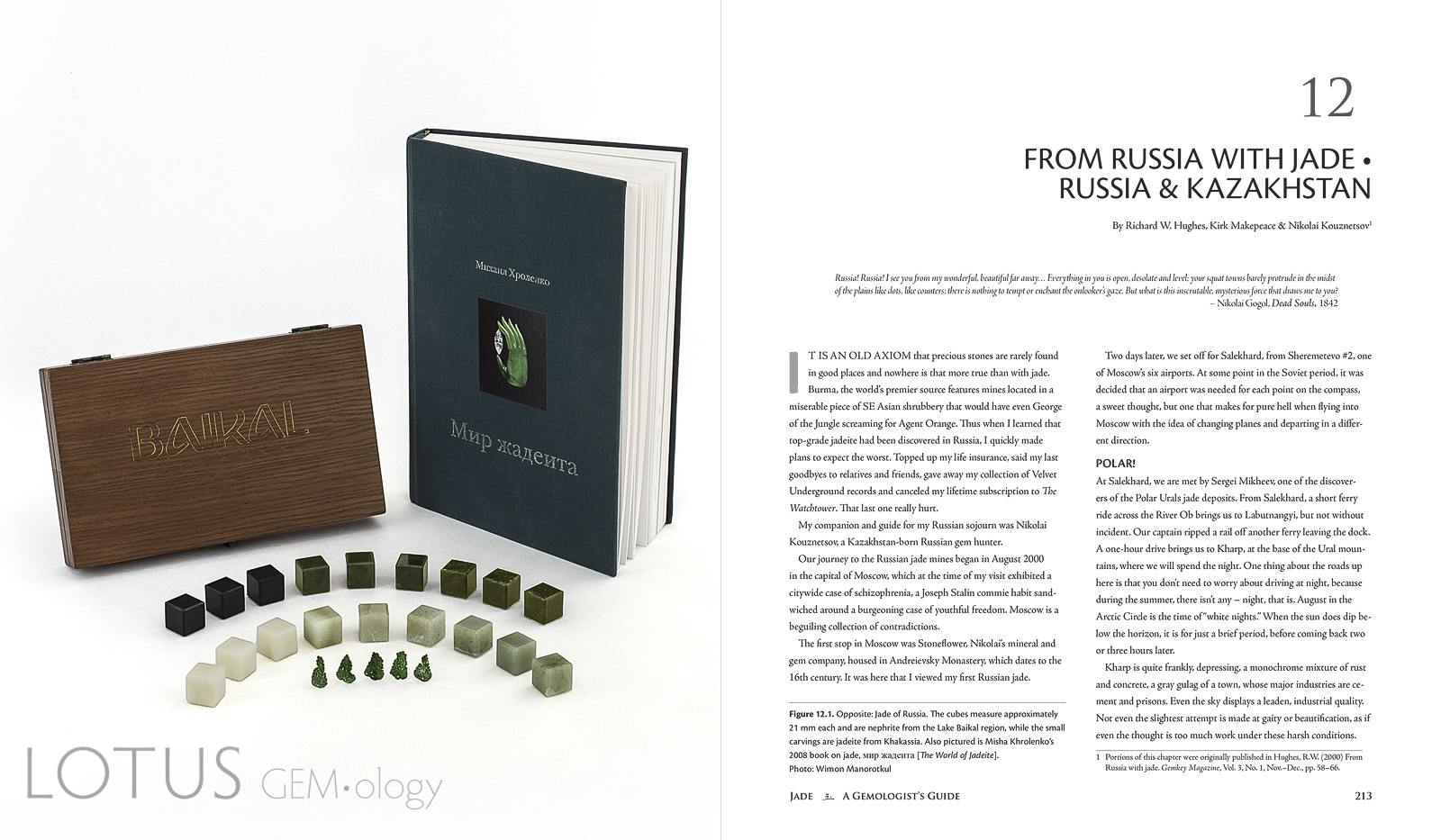
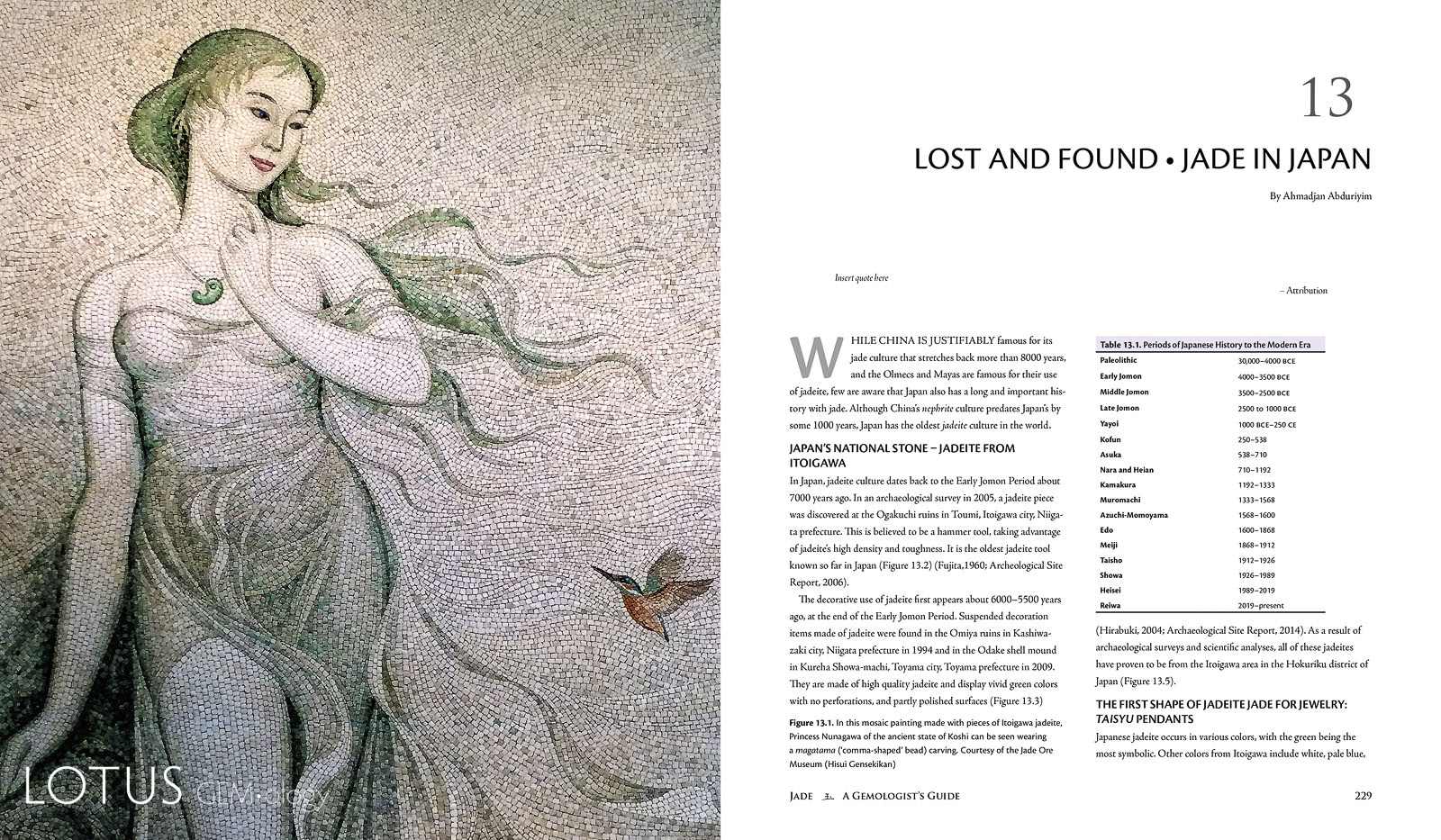
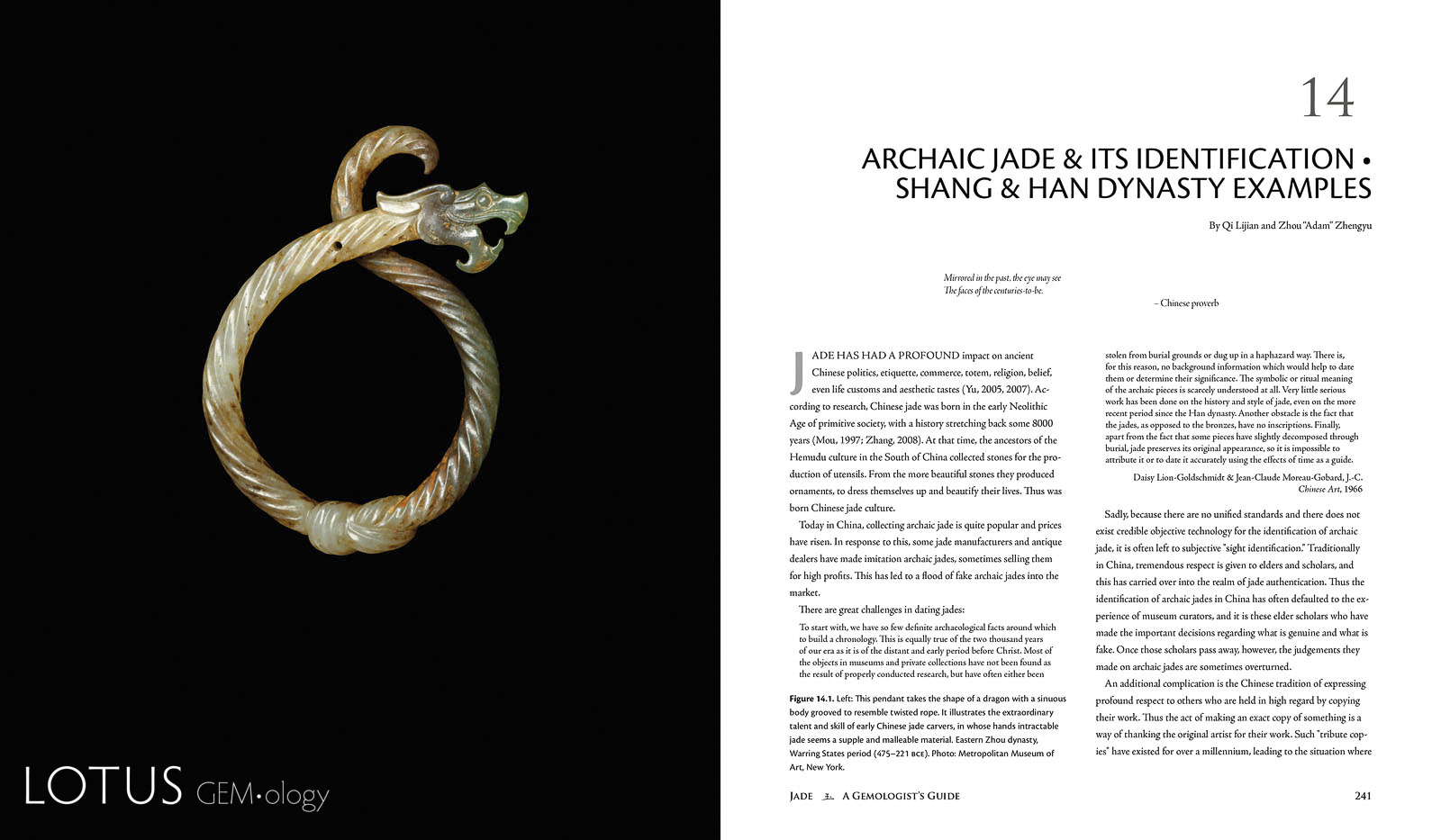
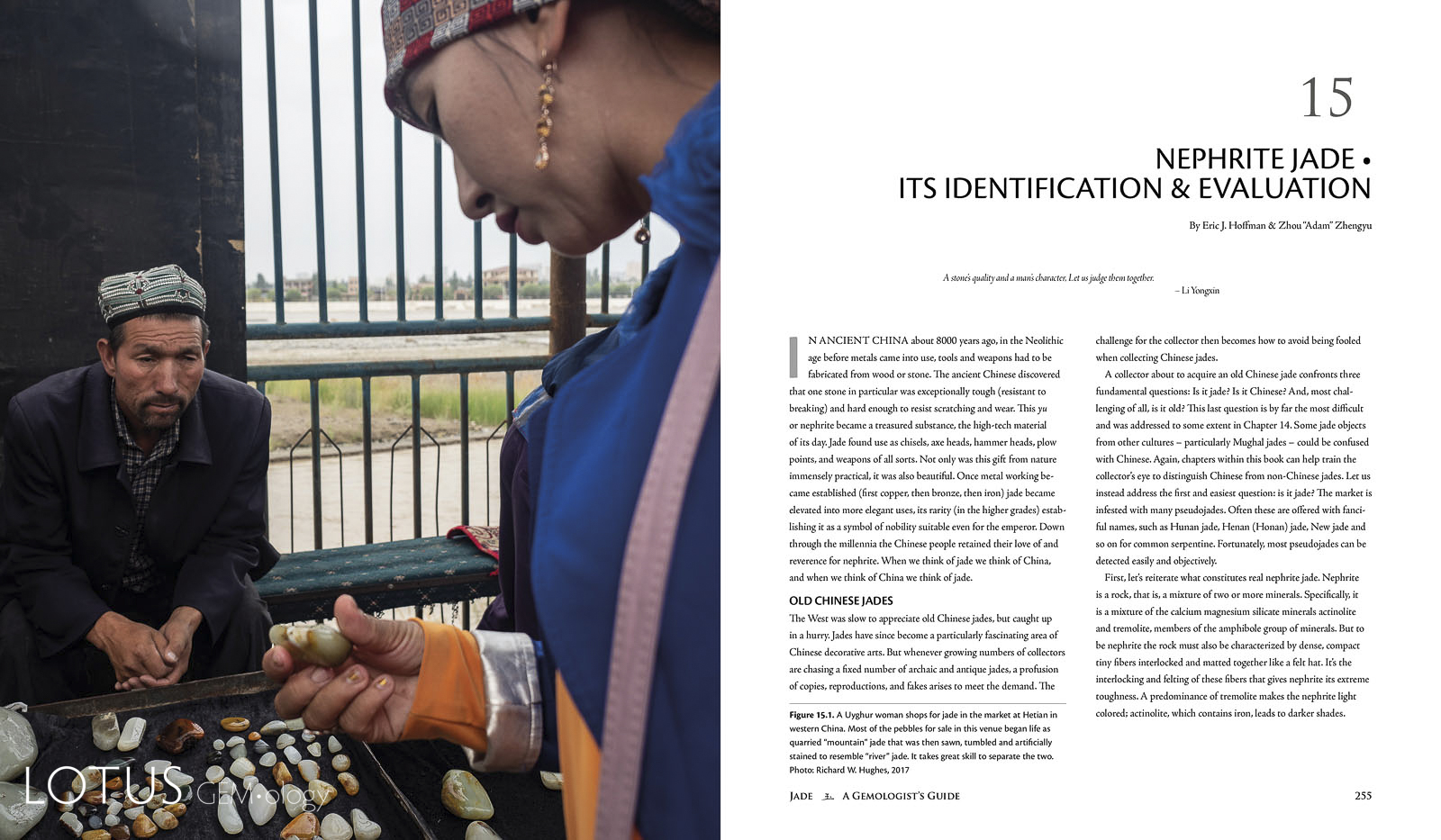
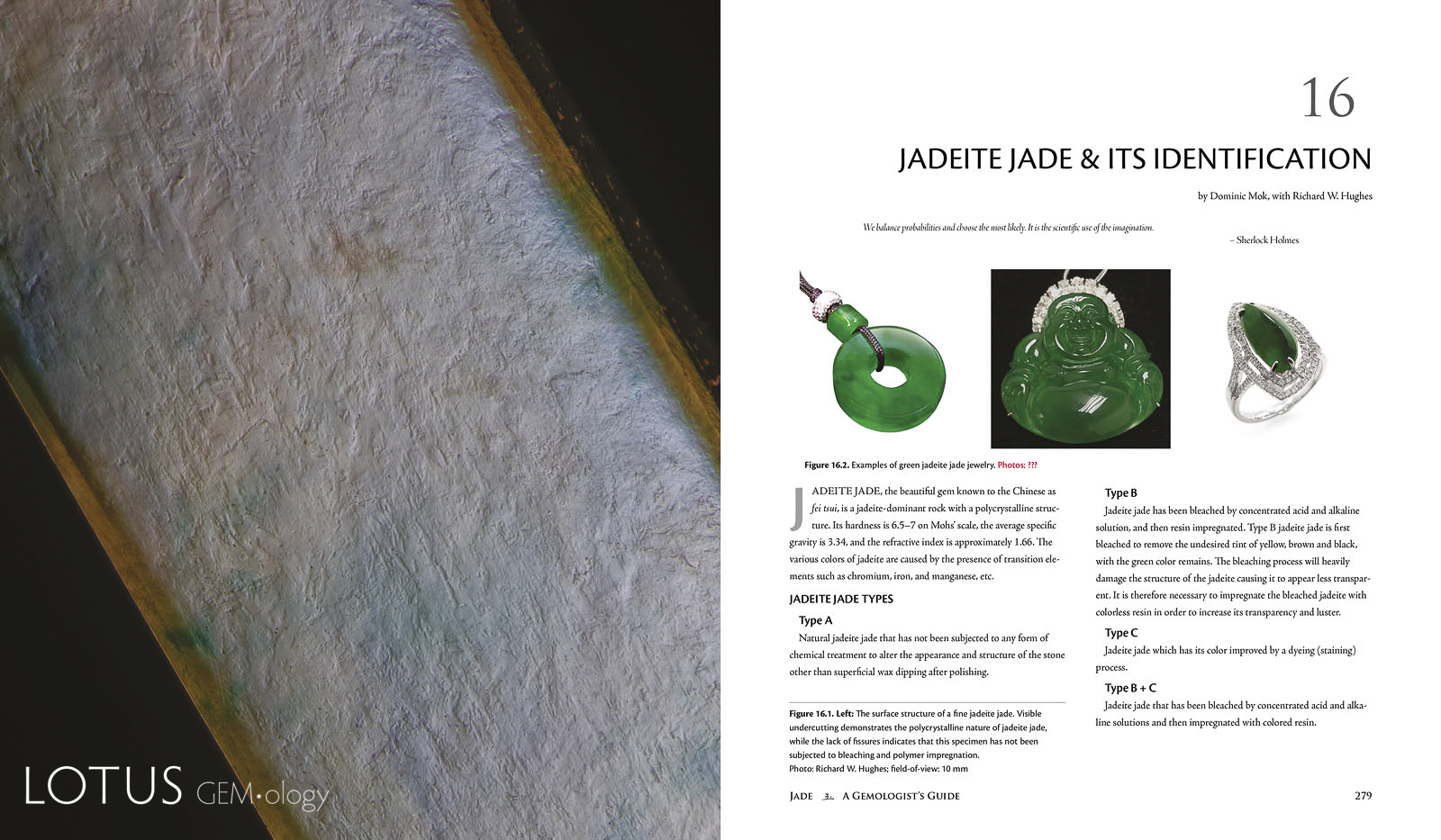
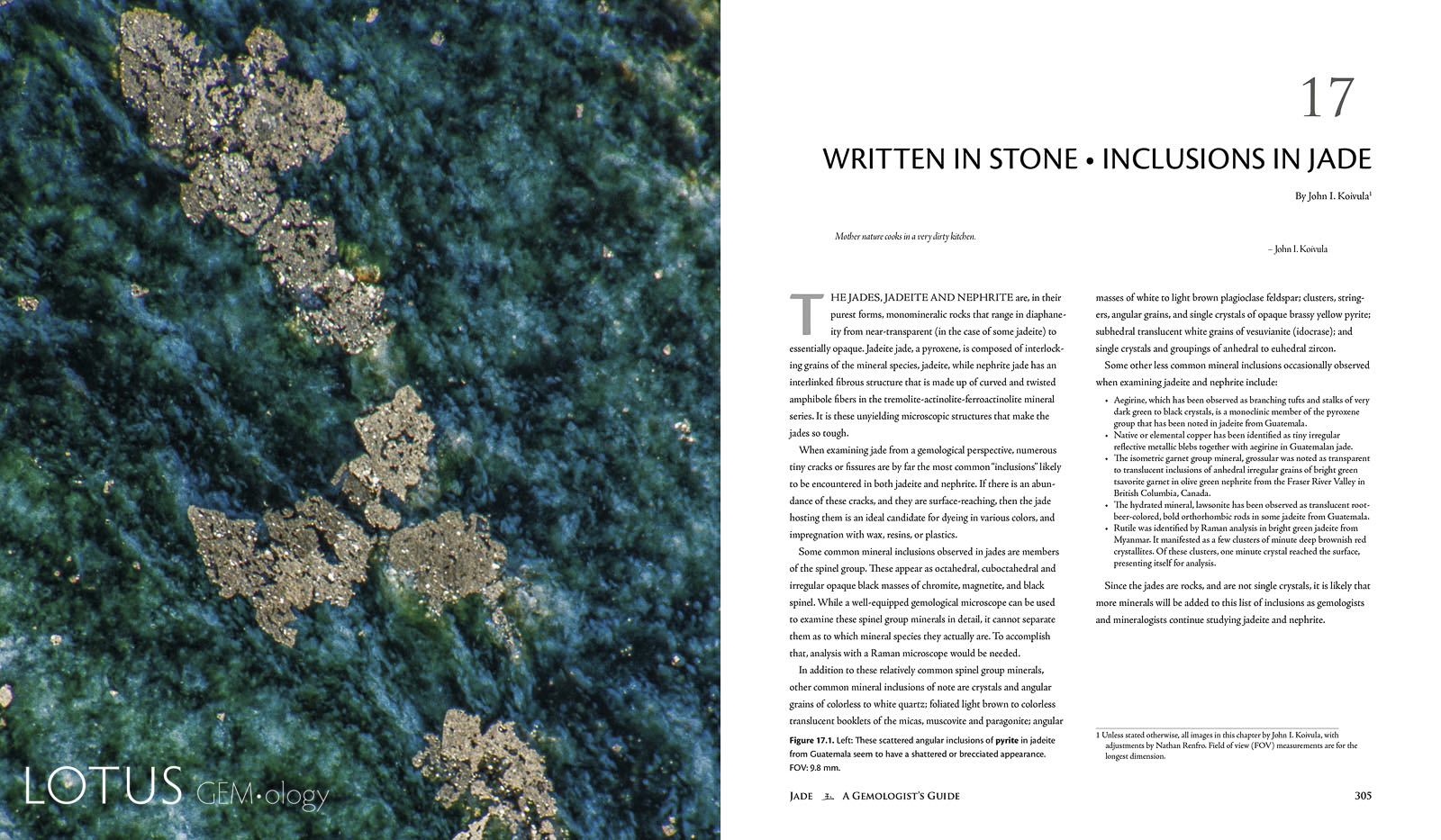
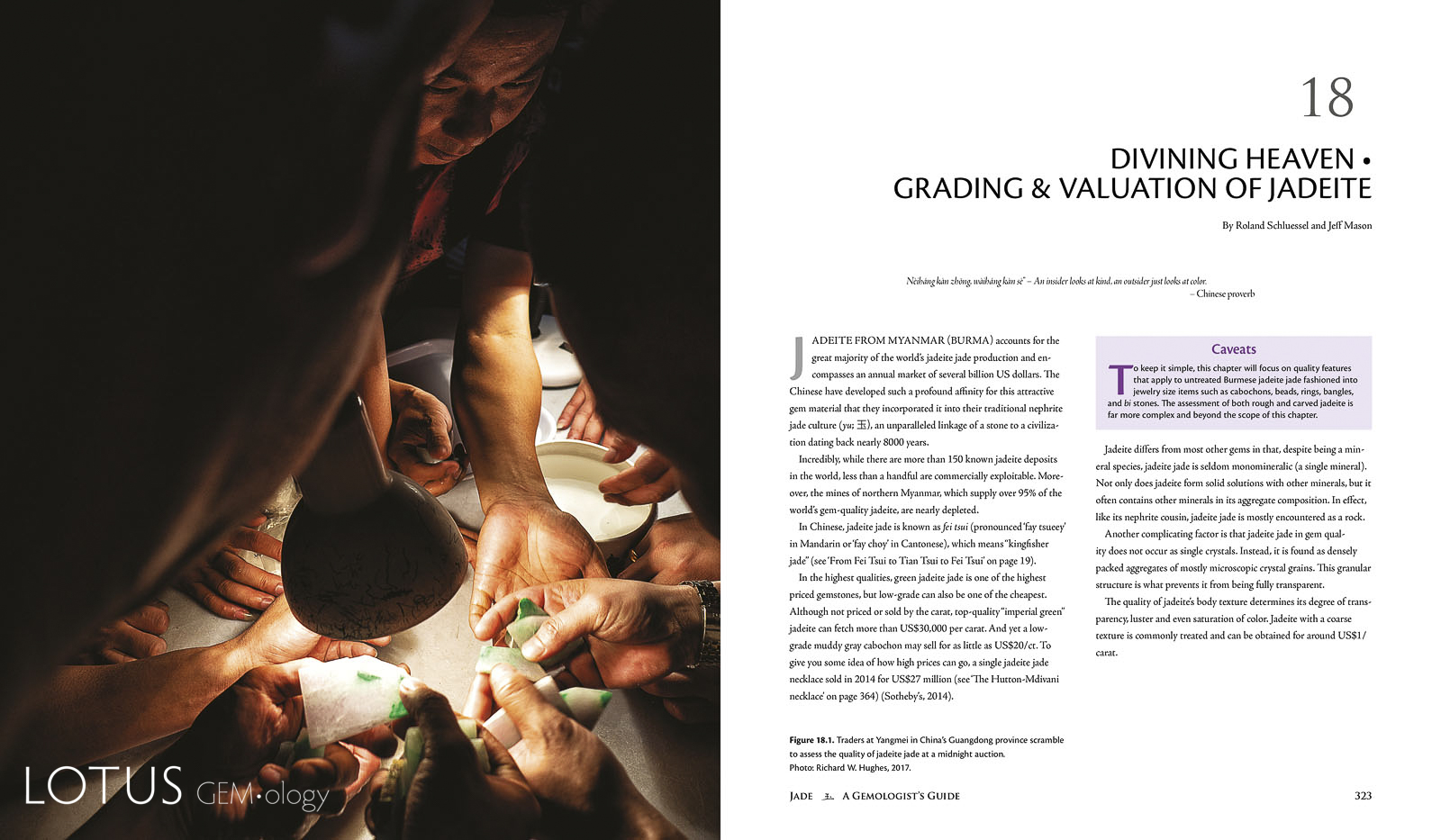
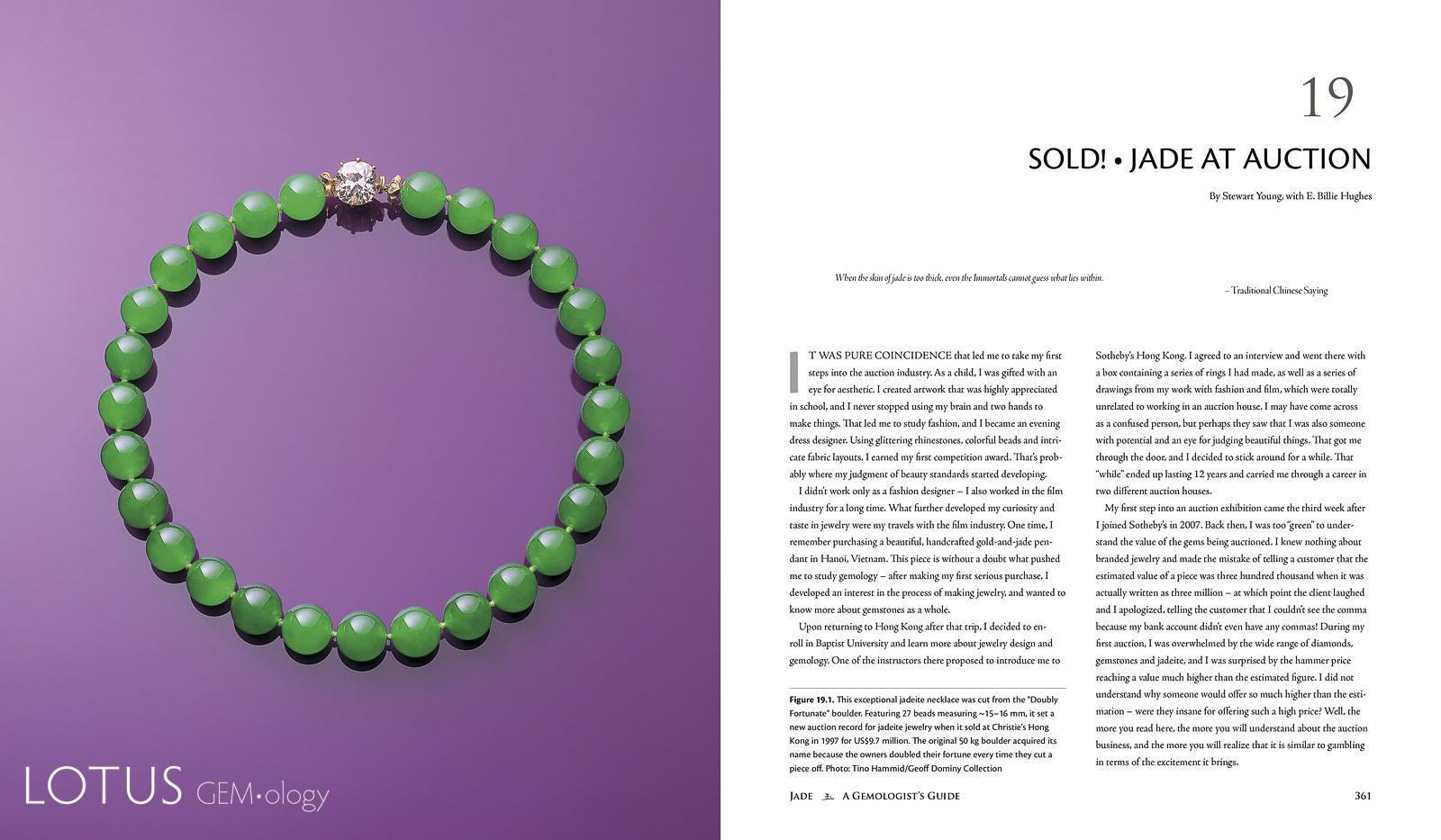
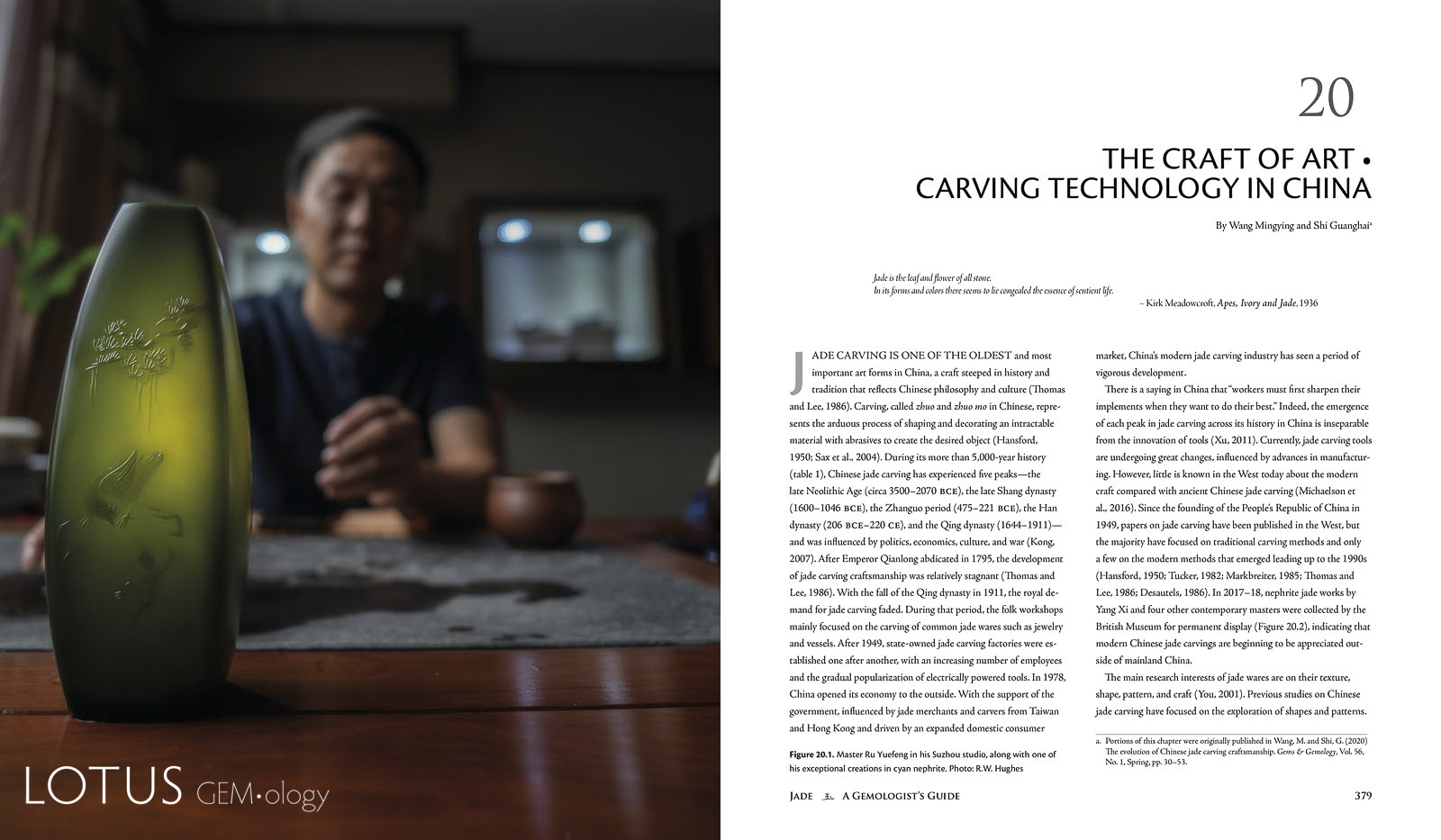
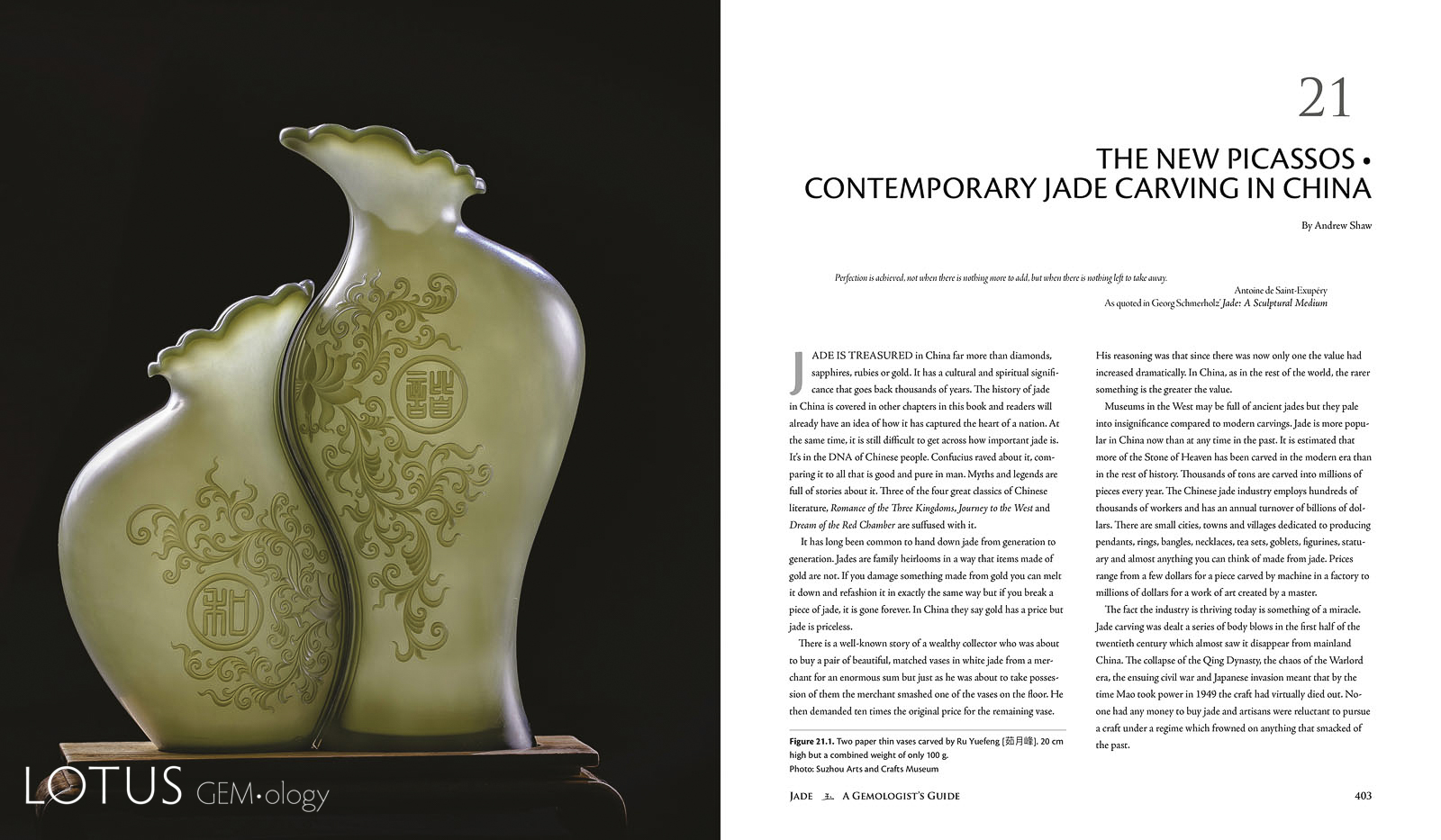
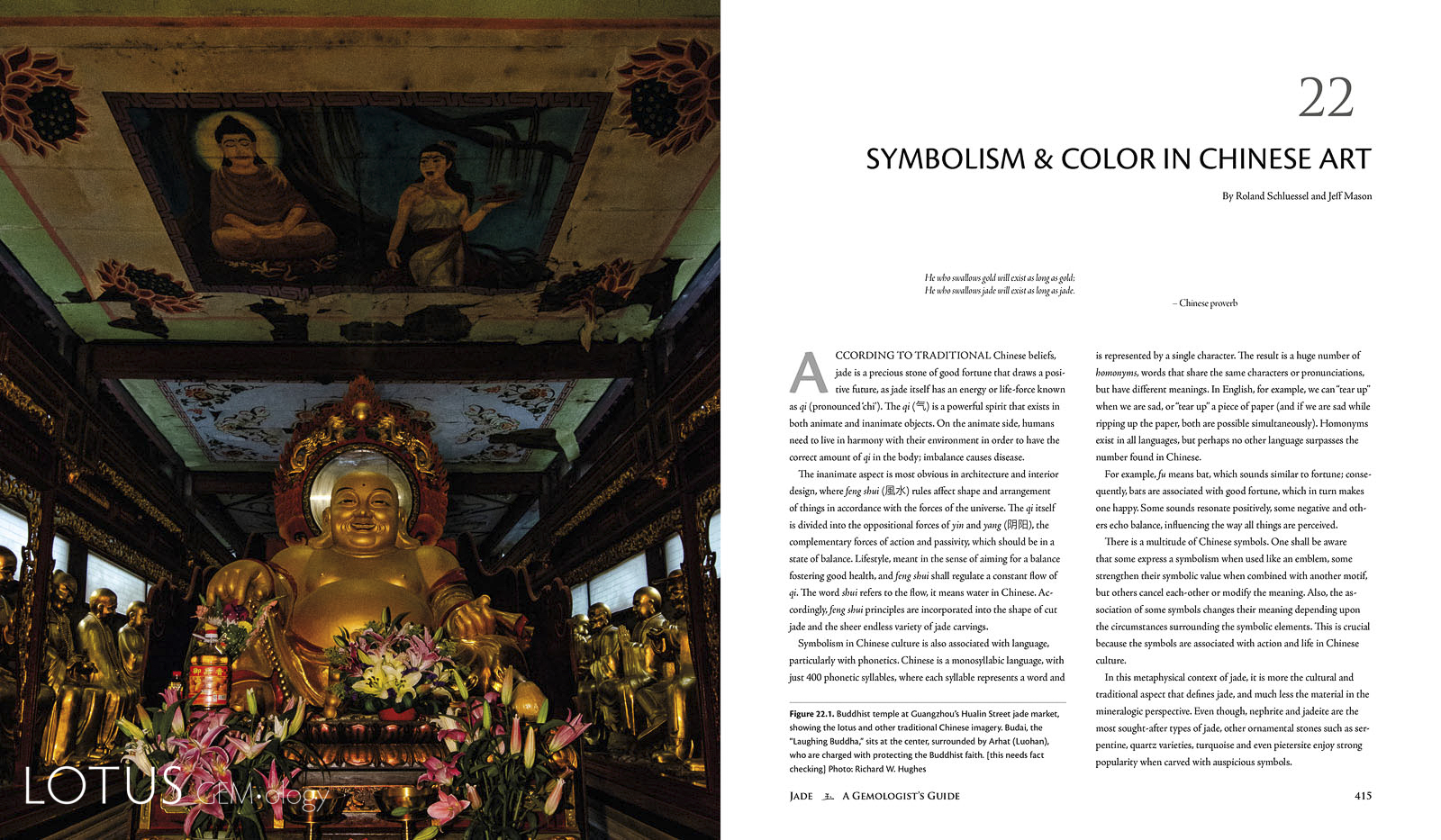
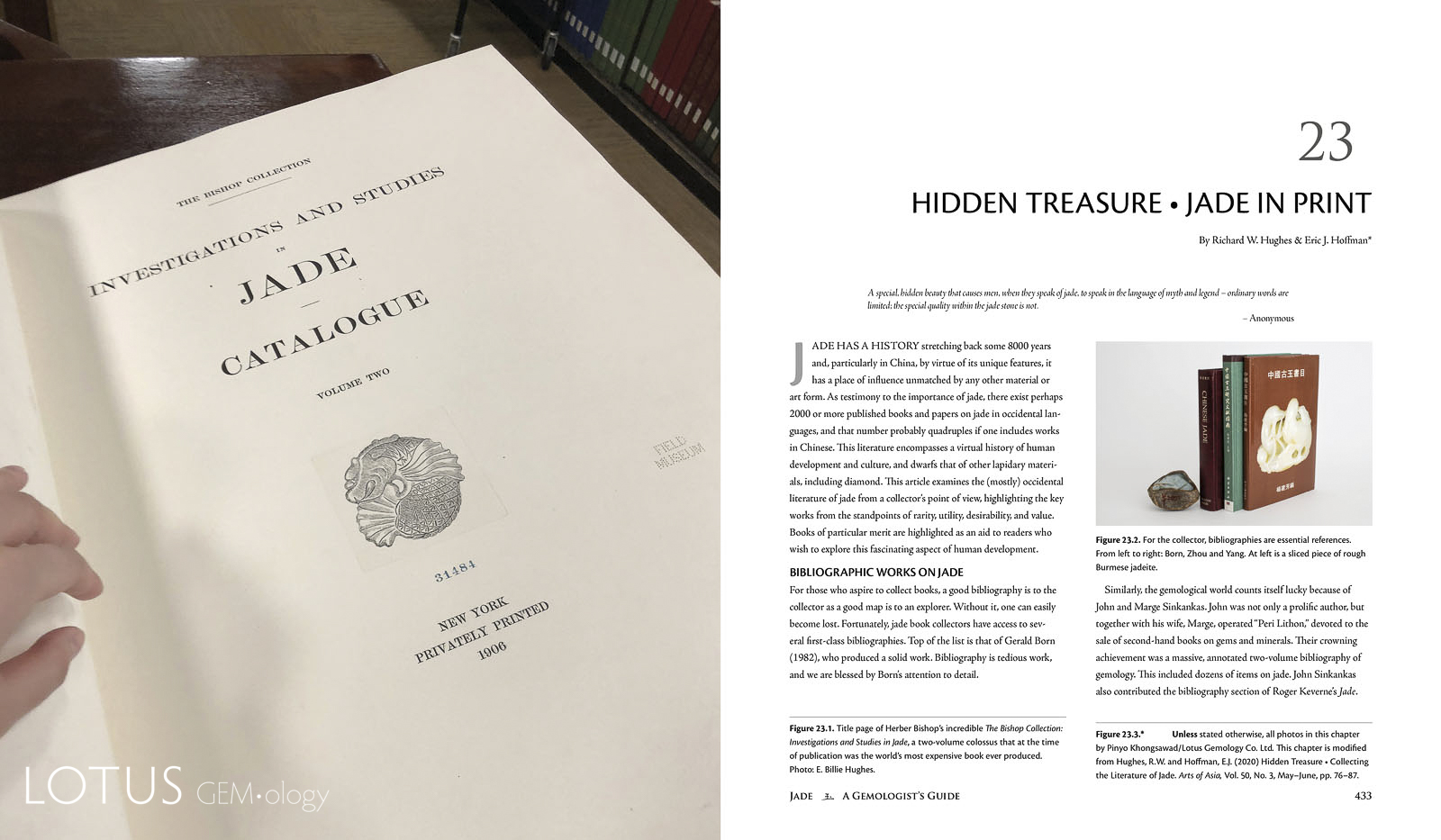
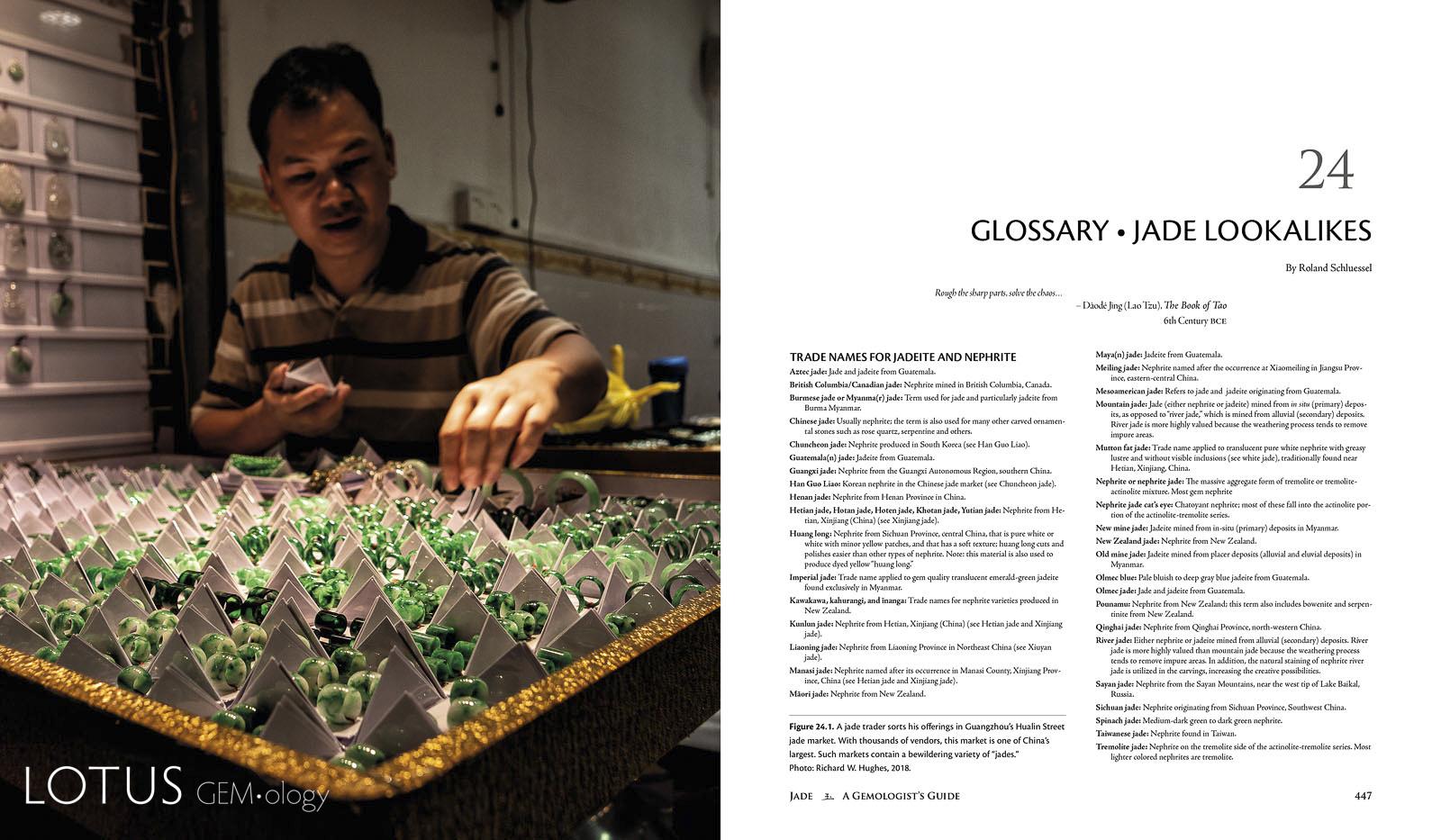
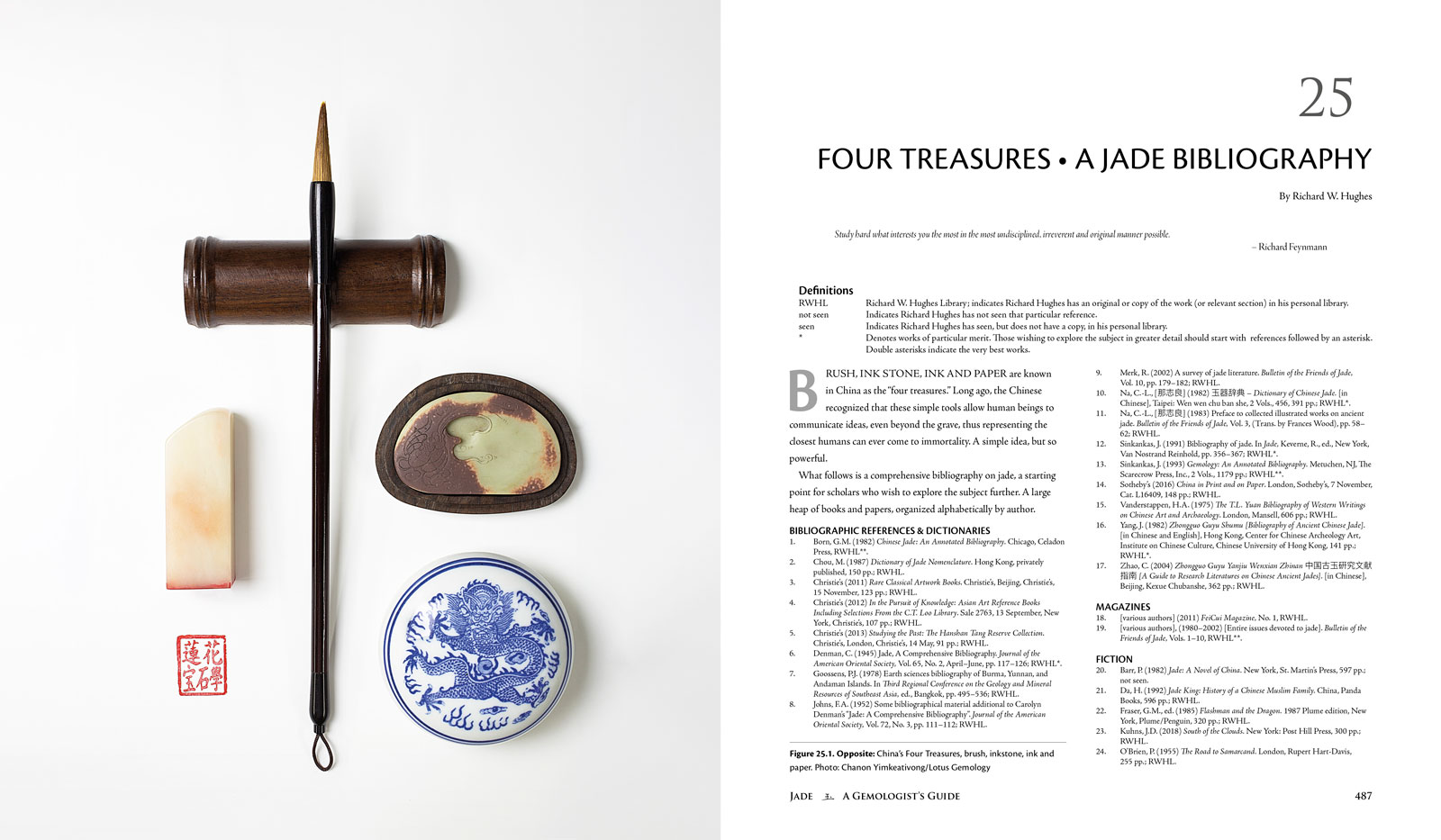
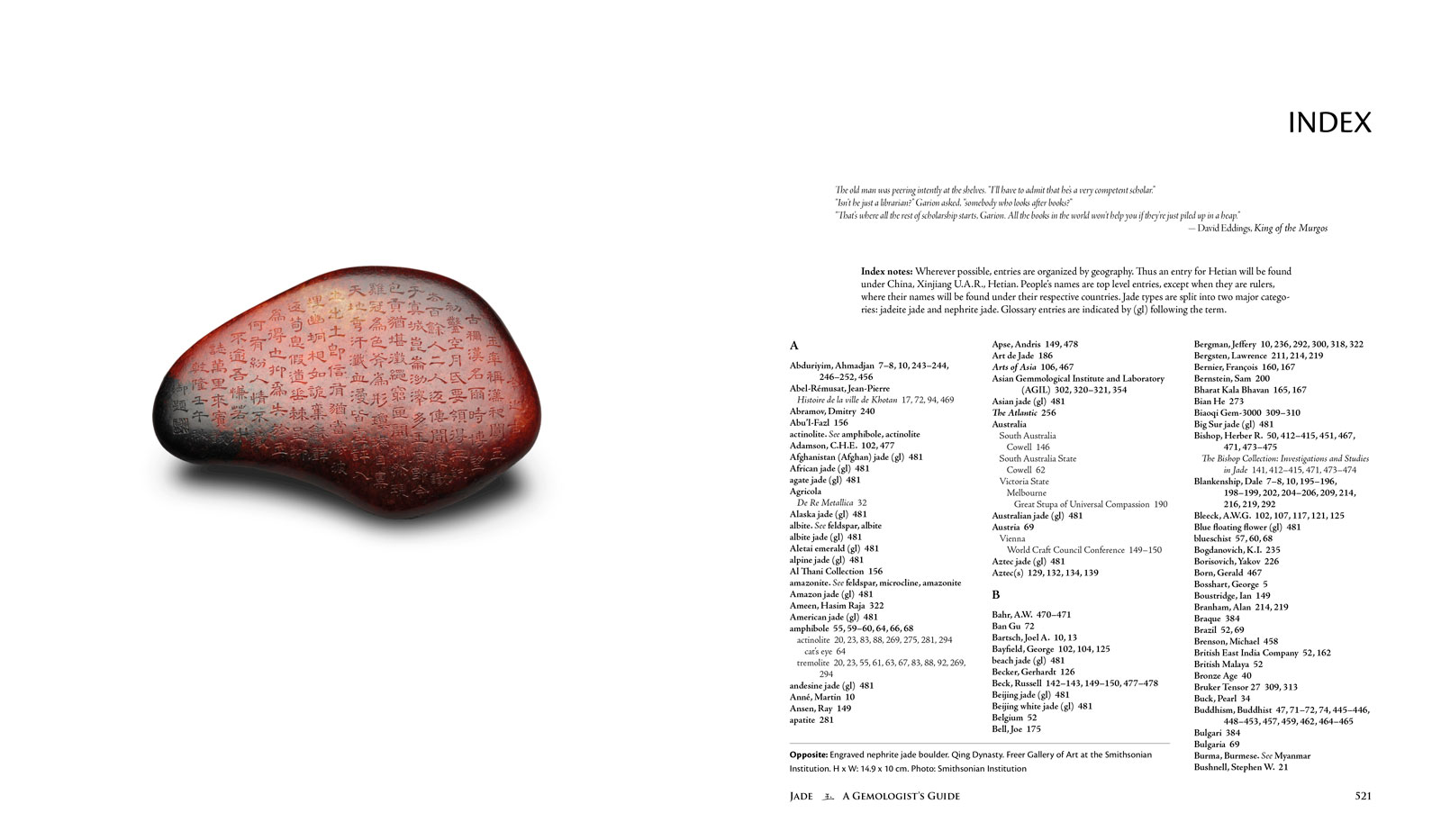
-
Burma’s Jade Mines — Tracing the Green Line
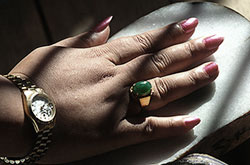
In 1996, several gemologists set off for Burma's remote jade mines, the first visit by foreigners since the early 1960's. This is the story of their epic journey.
-
From Fei Cui to Jadeite and Back — Questions and Answers
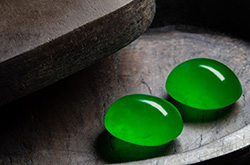
Recent studies show that the gem known throughout the non-Chinese world as "jadeite" jade is actually a rock composed of three major mineral components – jadeite, omphacite and kosmochlor. These components grow in a submicroscopic aggregate with grains so small that normal lab instruments cannot easily determine the true composition. As a result, China's gem trade has adopted the traditional term "fei cui" (pronounced 'fay choy') to cover all the pyroxene jades. Lotus Gemology has done the same starting on 1 July 2023, dropping the names jadeite/omphacite/kosmochlor in favor of the scientifically more correct "fei cui."
-
Imperial Jade of Burma & Mutton-Fat Jade of India — Book Review
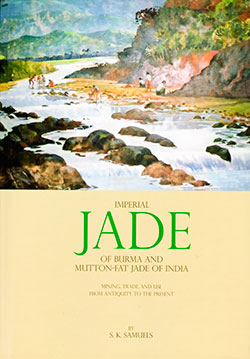
Samuels, S.K. (2014) Imperial Jade of Burma and Mutton-Fat Jade of India: Mining, Trade, and Use from Antiquity to the Present. SKS Enterprises, Inc., Tucson, AZ, USA, 248 pp. ISBN: 978-0-9725323-4-1
-
Jade — A Lifetime In Search of Heaven's Stone
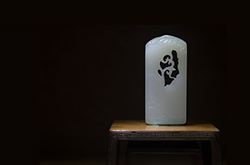
The story of Richard Hughes' four-decade adventure with jade, from Burma's jadeite mines to China's classic mutton-fat nephrite deposit at Hetian, Xinjiang Province. The work of China's modern jade carving masters is also discussed.

